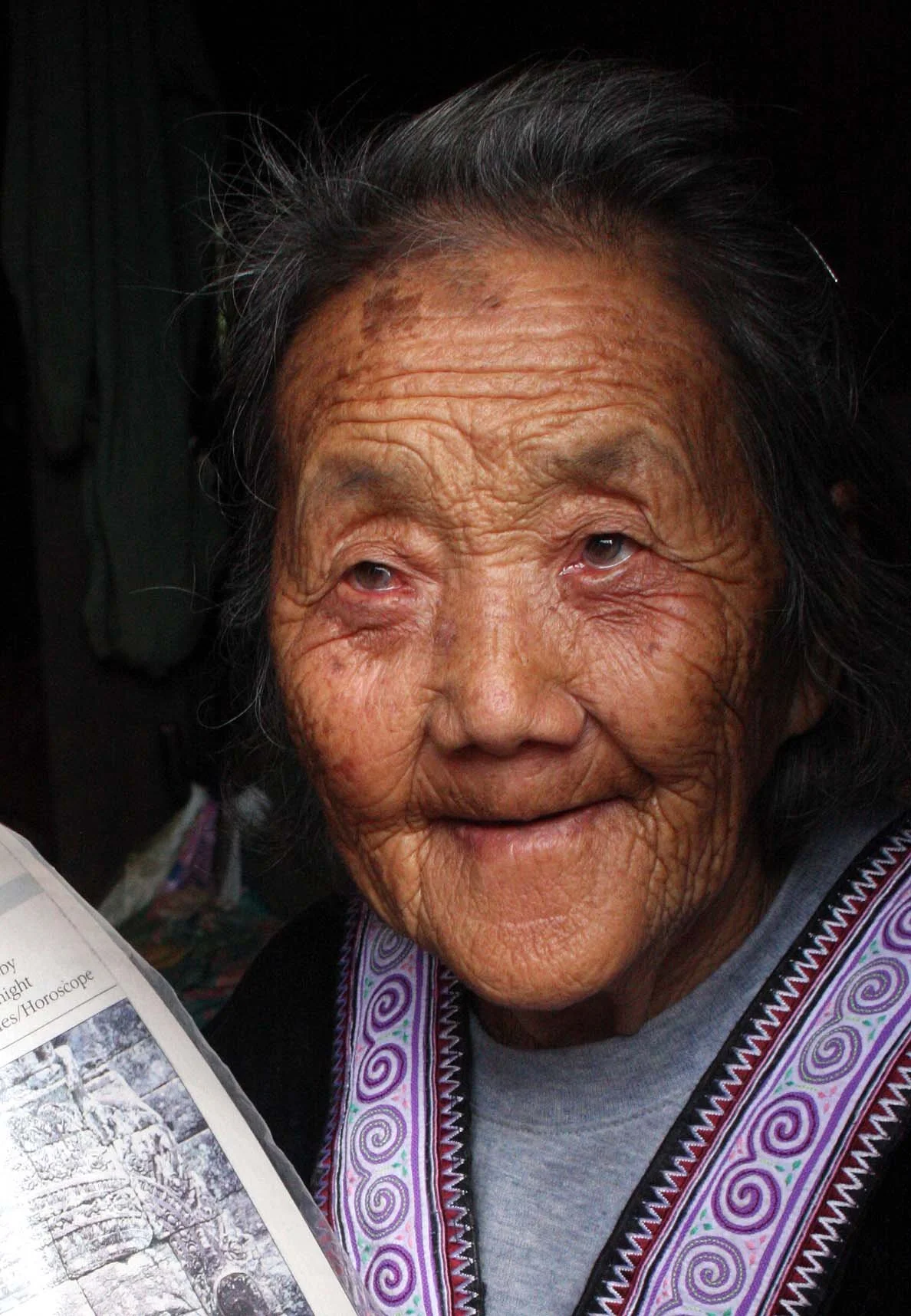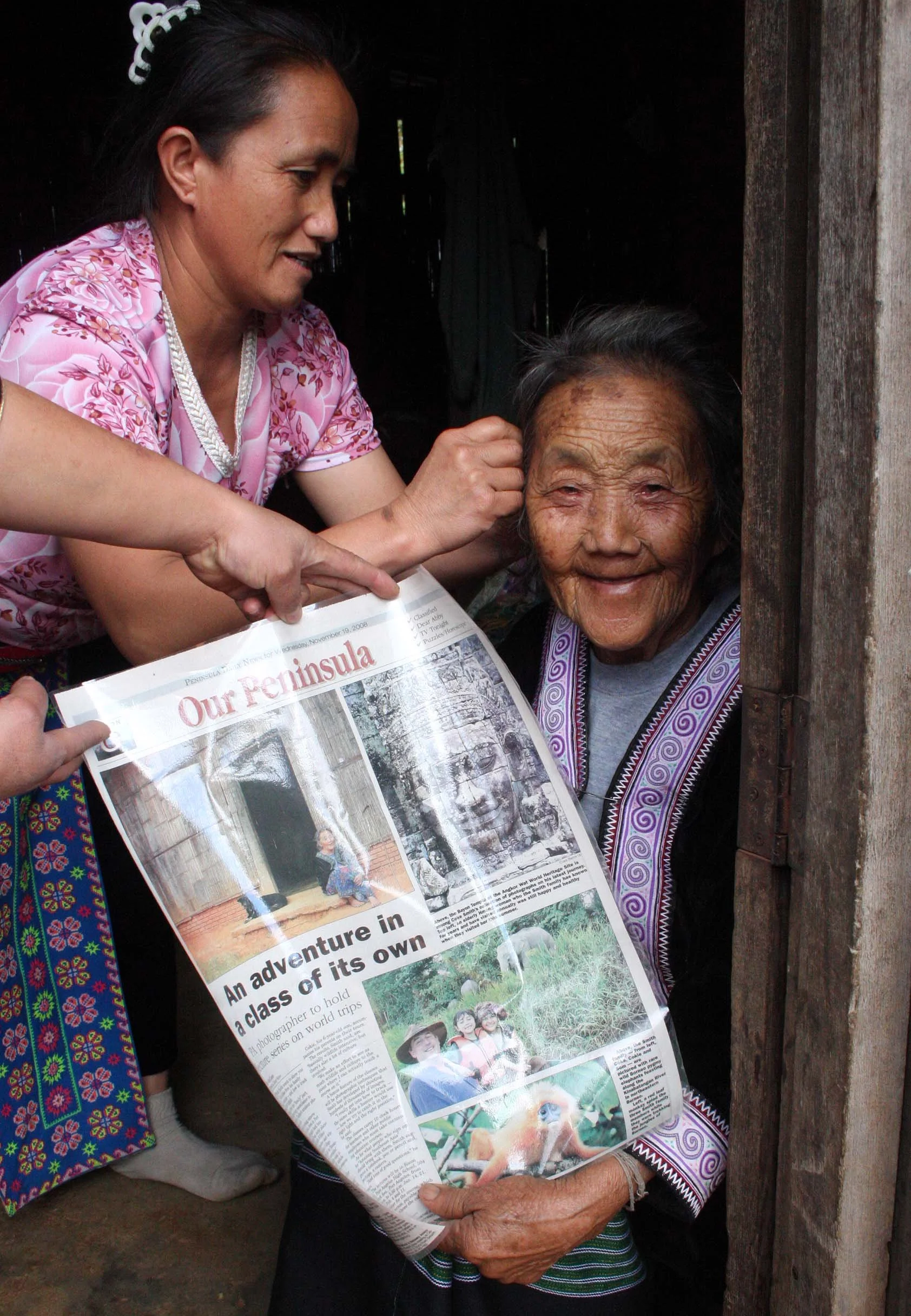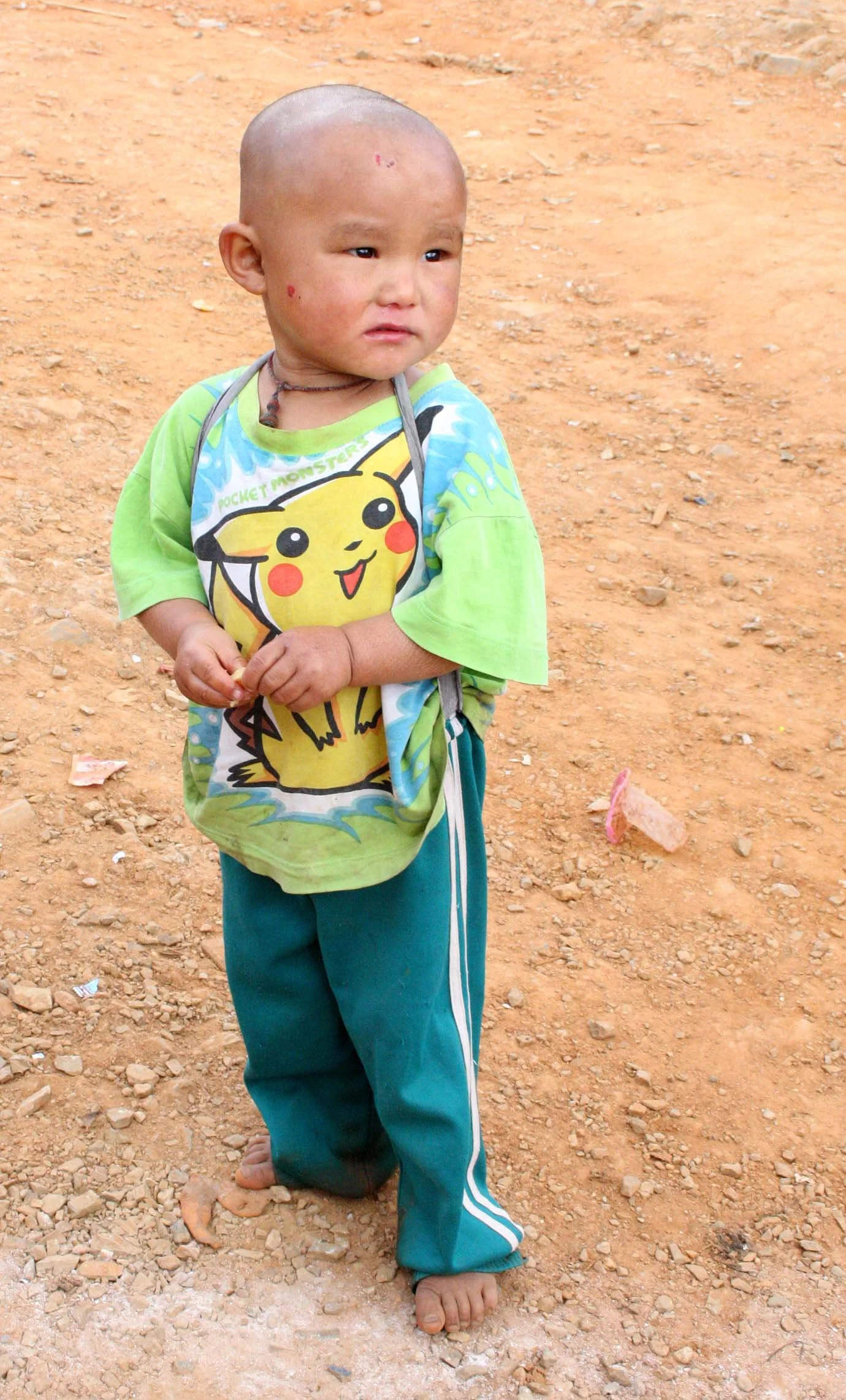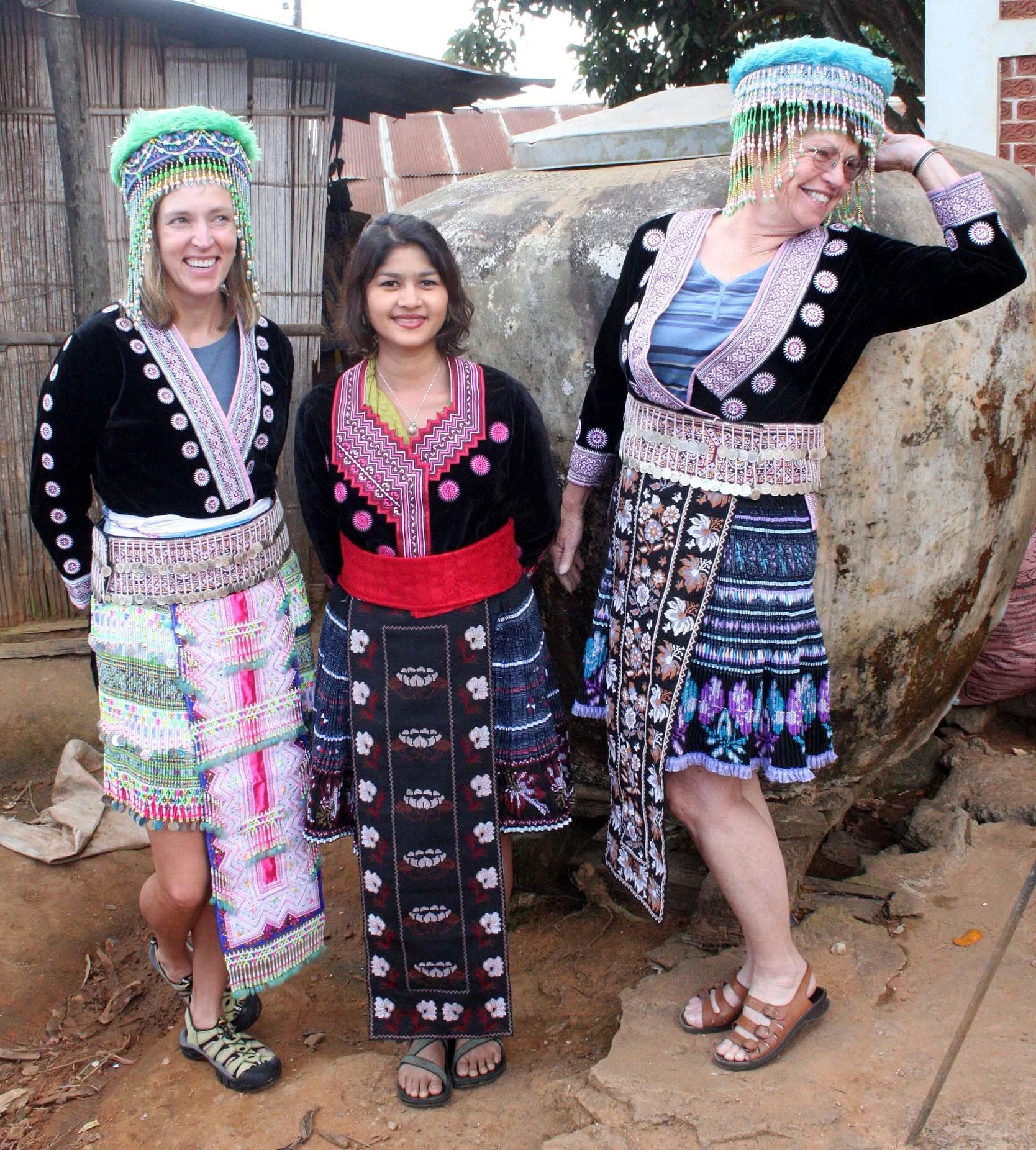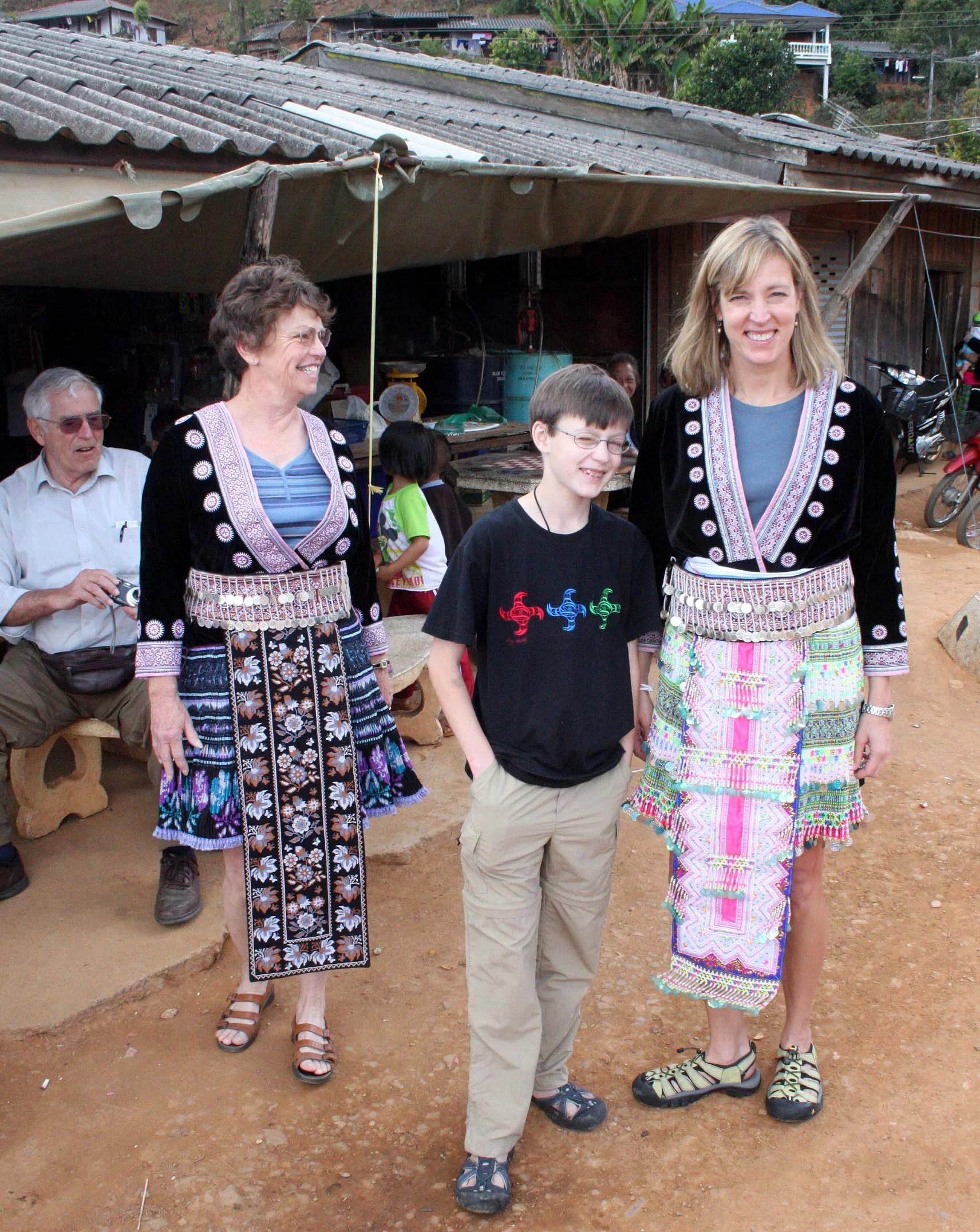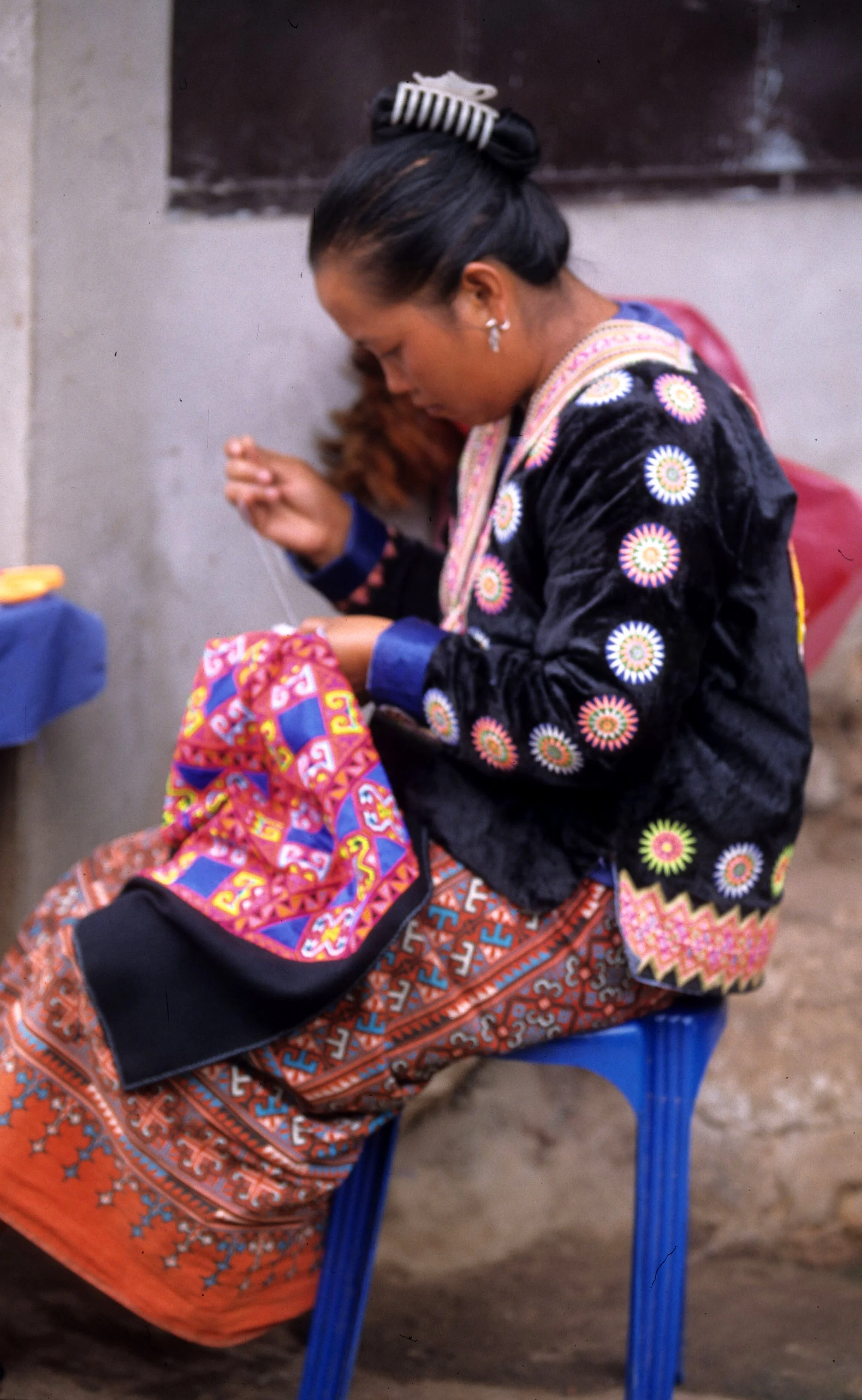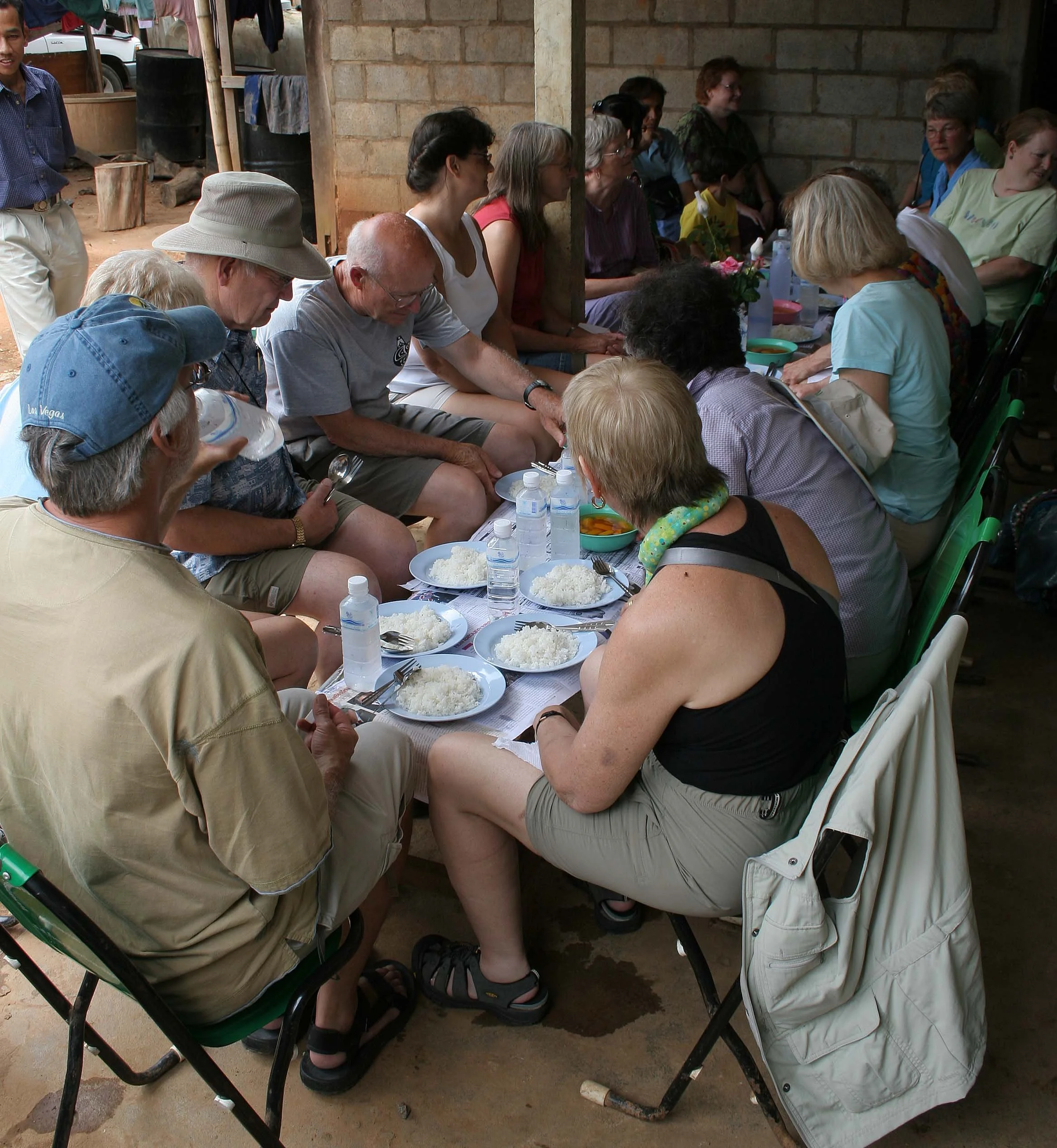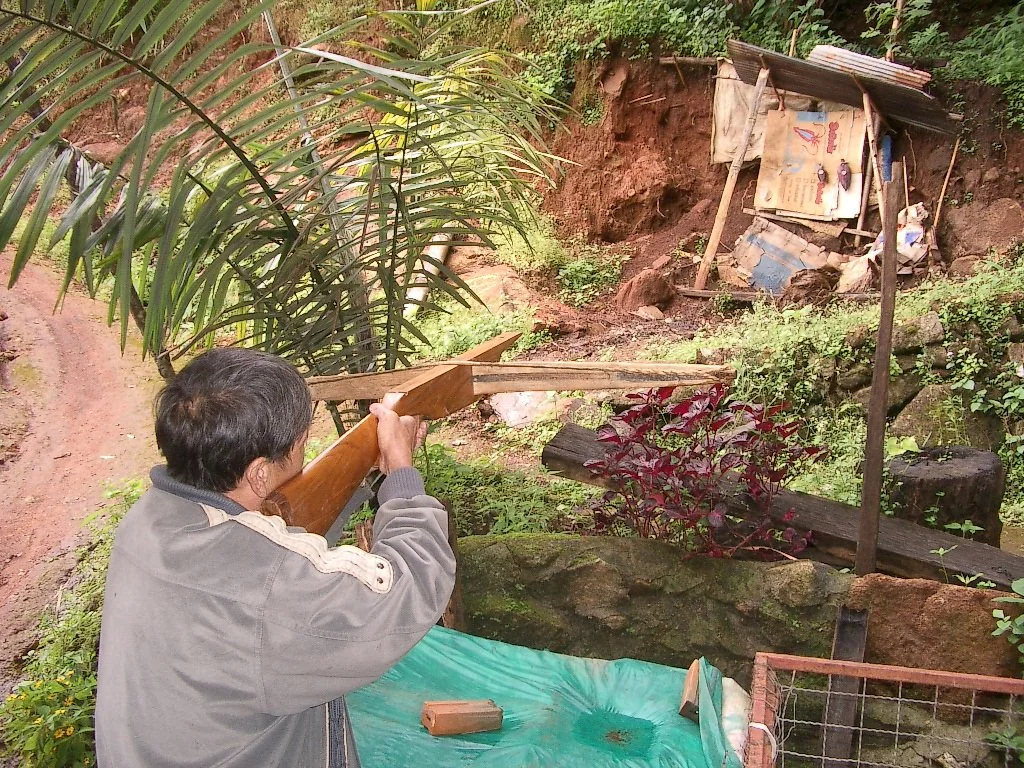The Hmong Tribe
Our village matriarch with the front-page article published about her in an American newspaper.
The Hmong people are an indigenous group in East Asia and Southeast Asia. In China, the Hmong people are classified as a sub-group of the Miao people. The modern Hmong reside mainly in Southwestern China and Mainland Southeast Asian countries such as Vietnam, Laos, Thailand, and Myanmar. There are also diaspora communities in the United States, Australia, and South America.
A DNA study in 2005 in Thailand found that Hmong paternal lineage is quite different from lu Mien and other Southeast Asian tribes. The Hmong–Mien and Sino-Tibetan speaking people are known as hill tribes in Thailand; they were the subject of the first studies to show an impact of patrilocality vs. matrilocality on patterns of mitochondrial (mt) DNA vs. the male-specific portion of the Y chromosome (MSY) variation. According to linguist Martha Ratliff, there is linguistic evidence to suggest that they have occupied some of the same areas of southern China for over 8,000 years. Evidence from mitochondrial DNA in Hmong–Mien–speaking populations supports the existence of southern origins of maternal lineages even further back in time, although it has been shown that Hmong-speaking populations had comparatively more contact with northern East Asians than had the Mien. Overall, Hmong–Mien cluster with Tai-Kadai and Sino-Tibetan speakers compared to other Chinese populations. However, there is evidence that Hmong-Mien groups show stronger affinities with Austroasiatic groups, with Tai-Kadai ancestry peaking in groups that live in southeastern China.
Homeland
The most likely homeland of the Hmong–Mien languages is in southern China between the Yangtze and Mekong rivers. In particular, southwestern China was suggested to the original homeland of Hmong-Mien peoples.
Migration of people speaking these languages from southern China to Southeast Asia took place ca. 1600–1700 CE. Ancient DNA evidence suggests that the ancestors of the speakers of the Hmong–Mien languages were a population genetically distinct from that of the Tai–Kadai and Austronesian language populations at a location on the Yangtze River. Recent Y-DNA phylogeny evidence supports the theory that people who speak the Hmong–Mien languages are descended from a population that is distantly related to those who now speak the Mon-Khmer languages. Another study shows that the core Hmong-Mien population in southern China derived most of their ancestry from Neolithic Mekong (32.3%–35.3%) than Late Neolithic Fujian (23.7%–26.4%).
The time of Proto-Hmong–Mien was estimated to be about 2500 BP (500 BC) by Sagart, Blench, and Sanchez-Mazas using traditional methods employing many lines of evidence, and about 4243 BP by the Automated Similarity Judgment Program (ASJP), an experimental algorithm for automatic generation of phonologically based phylogenies.
China
Hmong traditions and legends indicate that they originated near the Yellow River region of northern China, but this is not substantiated by any scientific evidence. According to linguist Martha Ratliff, there is linguistic evidence to suggest that they have occupied some of the same areas of southern China for over 8,000 years. Evidence from mitochondrial DNA in Hmong–Mien–speaking populations supports the southern origins of maternal lineages even farther back in time, although it has been shown that Hmong-speaking populations had comparatively more contact with northern East Asians than the Mien. A rare haplogroup, O3d, was found at the Daxi culture in the middle reaches of the Yangtze River, indicating that the Daxi people might be the ancestors of modern Hmong–Mien populations, which show only small traces of O3d today.
In 2011, Hmong DNA was sampled and found to contain 7.84% D-M15 and 6%N(Tat) DNA.[40] The research found a common ancestry between Hmong–Mien peoples and Mon-Khmer groups dating to the Last Glacial Maximum, approximately 15,000 to 18,000 years ago.
In 2021, researchers found that a 500 year old 'GaoHuaHua' population in Guangxi contributed to the ancestries of modern Hmong-Mien groups in Guangxi. The 'GaoHuaHua' population was modeled as having 66% Dushan-related ancestry and 34% Bushan-related ancestry. They also received Northeast Asian-related Shandong ancestry, which emerged 9,500–7,700 years ago.
The author of Guoyu, written in the 4th to 5th century, considered Chi You's Jiu Li tribe to be related to the ancient ancestors of the Hmong, the San-Miao people. Chi You is the Hmong ancestral God of War. Today, a statue of Chi You has been erected in the town named Zhuolu.
Conflict between the Hmong of southern China and newly arrived Han settlers increased during the 18th century under repressive economic and cultural reforms imposed by the Qing dynasty. This led to armed conflict and large-scale migrations well into the late 19th century, the period during which many Hmong people emigrated to Southeast Asia. However, the migration process had begun as early as the late 17th century, before the time of major social unrest, when small groups went in search of better agricultural opportunities.
An ethnobotany lecture about some of the forest products used routinely by the Hmong.
The Hmong people were subjected to persecution and genocide by the Qing dynasty government. Arthur A. Hansen wrote: "In the eighteenth and nineteenth centuries, while the Hmong lived in south-western China, their Manchu overlords had labeled them 'Miao' and targeted them for genocide."
Since 1949, the Miao people (Chinese: 苗族; pinyin: miáo zú) has been an official term for one of the 56 official minority groups recognized by the government of the People's Republic of China. The Miao live mainly in southern China, in the provinces of Guizhou, Hunan, Yunnan, Sichuan, Guangxi, Hainan, Guangdong, and Hubei. According to the 2000 census, the number of 'Miao' in China was estimated to be about 9.6 million. The Miao nationality includes Hmong people as well as other culturally and linguistically related ethnic groups who do not call themselves Hmong. These include the Hmu, Kho (Qho) Xiong, and A-Hmao. The settling region of the Hmong in China is further western than that of the other groups, mainly in Guizhou, Yunnan, Sichuan, Chongqing, and Guangxi.
Vietnam
The Hmong or Miao began to migrate to Tonkin (Northern Vietnam) in 19th century, where they struggled to establish their community on the high mountains. They recognized the Tai-speaking overlords of valleys, who were vassals of the Vietnamese court in Hue. The Hue court of Tu Duc at the time was facing crisis after crisis, unable to retake control of Tonkin and the border regions. The Taiping rebellion and other Chinese rebels spilled over into Vietnam and had caused anarchy; the Hmong communities thrived on either sides of the Red River, harmonizing with other ethnic groups, and were largely ignored by all factions.
During the colonization of 'Tonkin' (North Vietnam) between 1883 and 1954, a number of Hmong decided to join the Vietnamese Nationalists and Communists, while many Christianized Hmong sided with the French. After the Viet Minh victory, numerous pro-French Hmong had to fall back to Laos and South Vietnam.
Laos
After decades of distant relations with the Lao kingdoms, closer relations between the French military and some Hmong on the Xieng Khouang plateau arose after World War II. There, a rivalry between members of the Lo and Ly clans developed into open enmity, also affecting those connected with them by kinship. Clan leaders took opposite sides; as a consequence, several thousand Hmong participated in the fighting against the Pathet Lao Communists, while almost as many were enrolled in the communist Lao People's Revolutionary Army. In Laos, numerous Hmong genuinely tried to avoid getting involved in the conflict in spite of the extremely difficult material conditions under which they lived during wartime.
The U.S. and the Laotian Civil War
Hmong New Year celebrations in the Mae Sa region of Chiang Mai
In the early 1960s, partially as a result of the North Vietnamese invasion of Laos, the U.S. Central Intelligence Agency (CIA) Special Activities Division began to recruit, train and lead the indigenous Hmong people in Laos to fight against North Vietnamese Army divisions that were invading Laos during the Vietnam War. This "Secret Army" was organized into various mobile regiments and divisions, including Special Guerrilla Units, all of whom were led by General Vang Pao. An estimated sixty-percent (60%) of Hmong men in Laos joined up.
While there were Hmong soldiers who fought with the communist Pathet Lao and the North Vietnamese, others were recognized for serving in combat against the NVA and the Pathet Lao, helping block Hanoi's Ho Chi Minh trail inside Laos and rescuing downed American pilots. Though their role was generally kept secret in the early stages of the conflict, they made great sacrifices to help the U.S.
Thousands of economic and political refugees have resettled in Western countries in two separate waves. The first wave resettled in the late 1970s, mostly in the United States after the North Vietnamese and Pathet Lao takeovers of the pro-U.S. governments in South Vietnam and Laos respectively. The Lao Veterans of America, and Lao Veterans of America Institute, helped to assist in the resettlement of many Laotian and Hmong refugees and asylum seekers in the United States, especially former Hmong veterans and their family members who served in the "U.S. Secret Army" in Laos during the Vietnam War.
Thailand
The presence of Hmong settlements in Thailand is documented from the end of the 19th century on. Initially, the Siamese paid little attention to them. But in the early 1950s, the state suddenly took a number of initiatives aimed at establishing links. Decolonization and nationalism were gaining momentum in the peninsula and wars of independence were raging. Armed opposition to the state in northern Thailand, triggered by outside influence, started in 1967 while again many Hmong refused to take sides in the conflict. Communist guerrilla warfare stopped by 1982 as a result of an international concurrence of events that rendered it pointless. Priority has since been given by the Thai state to sedentarizing the mountain population, introducing commercially viable agricultural techniques and national education, with the aim of integrating these non-Tai animists within the national identity.




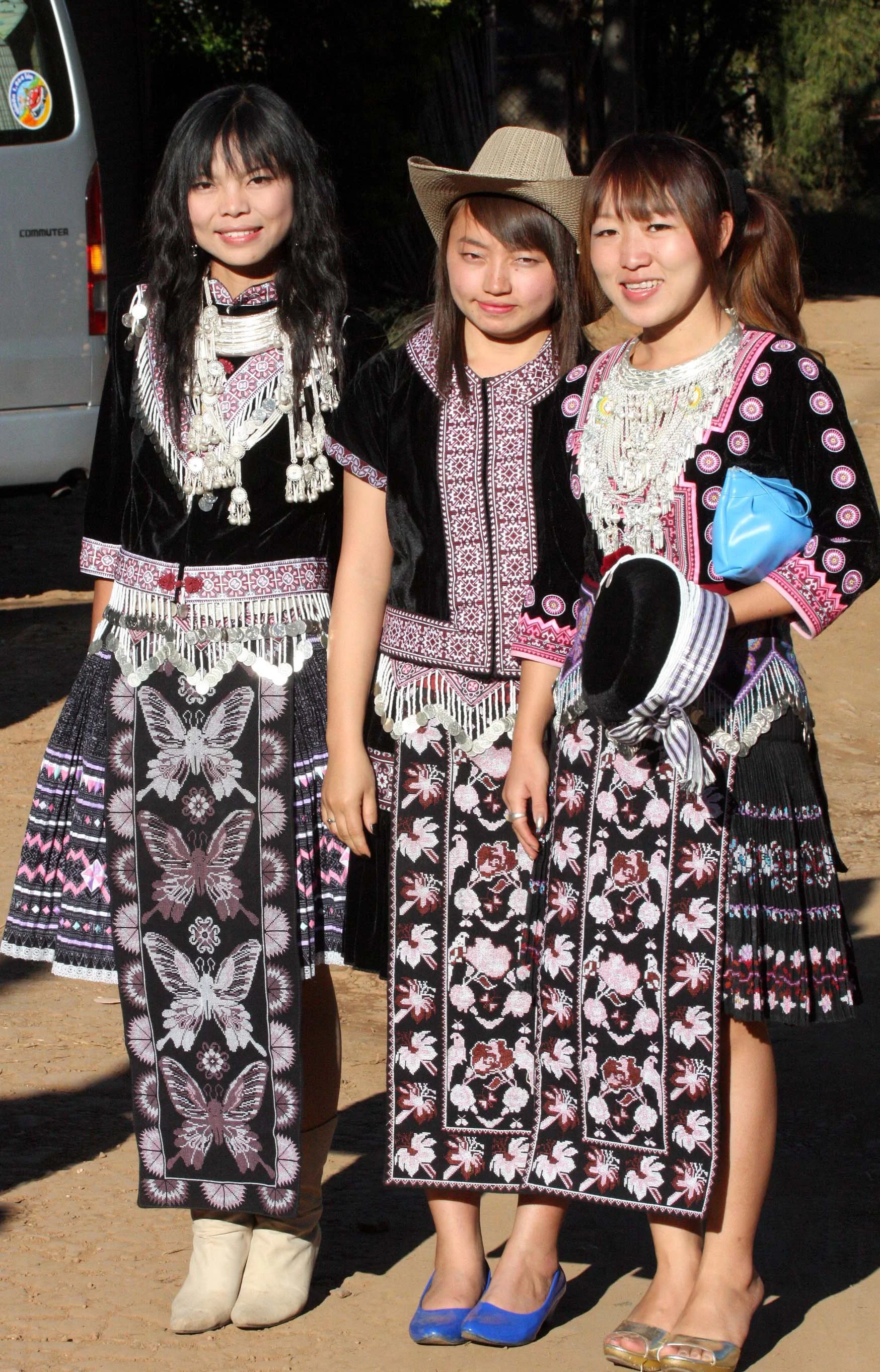
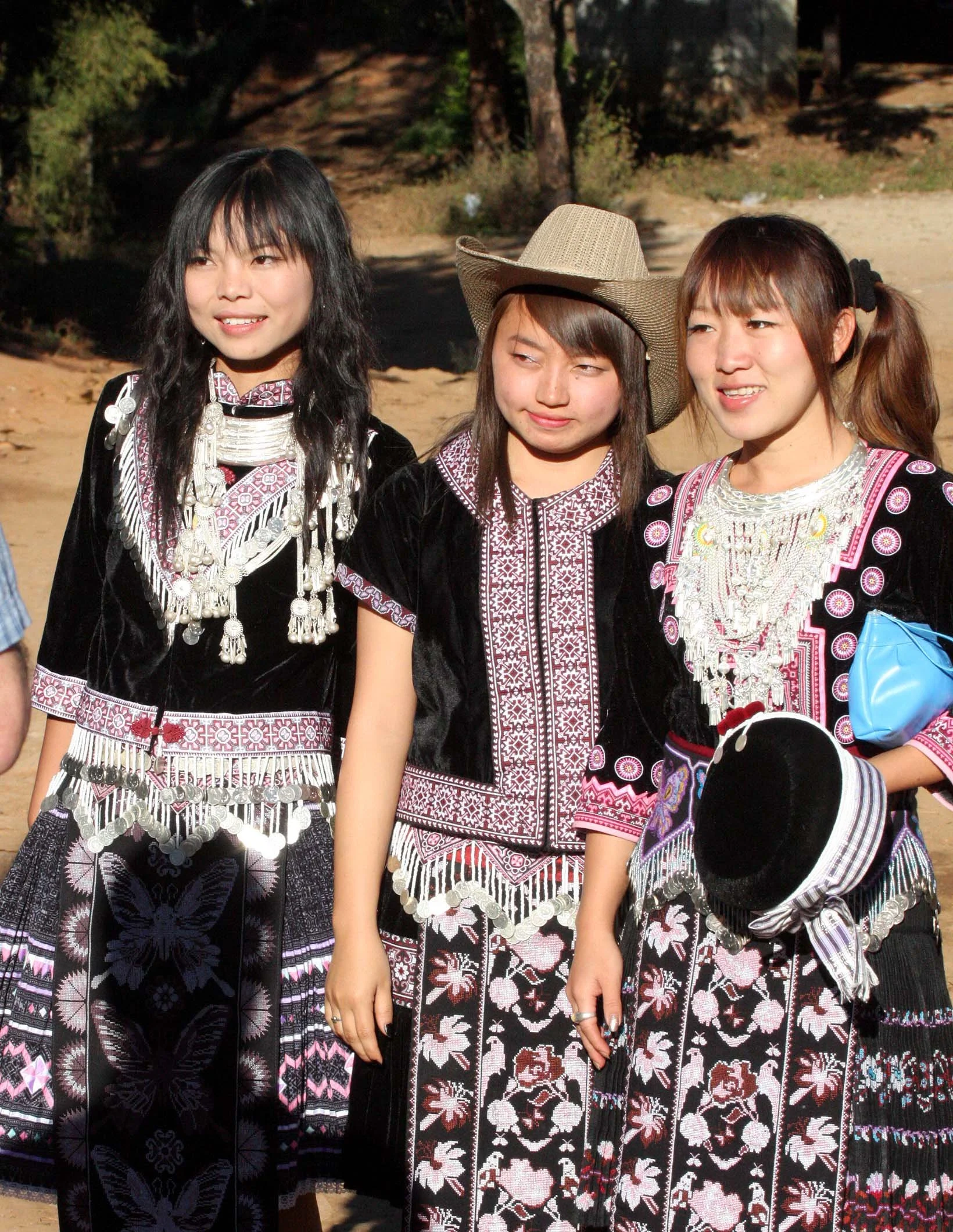
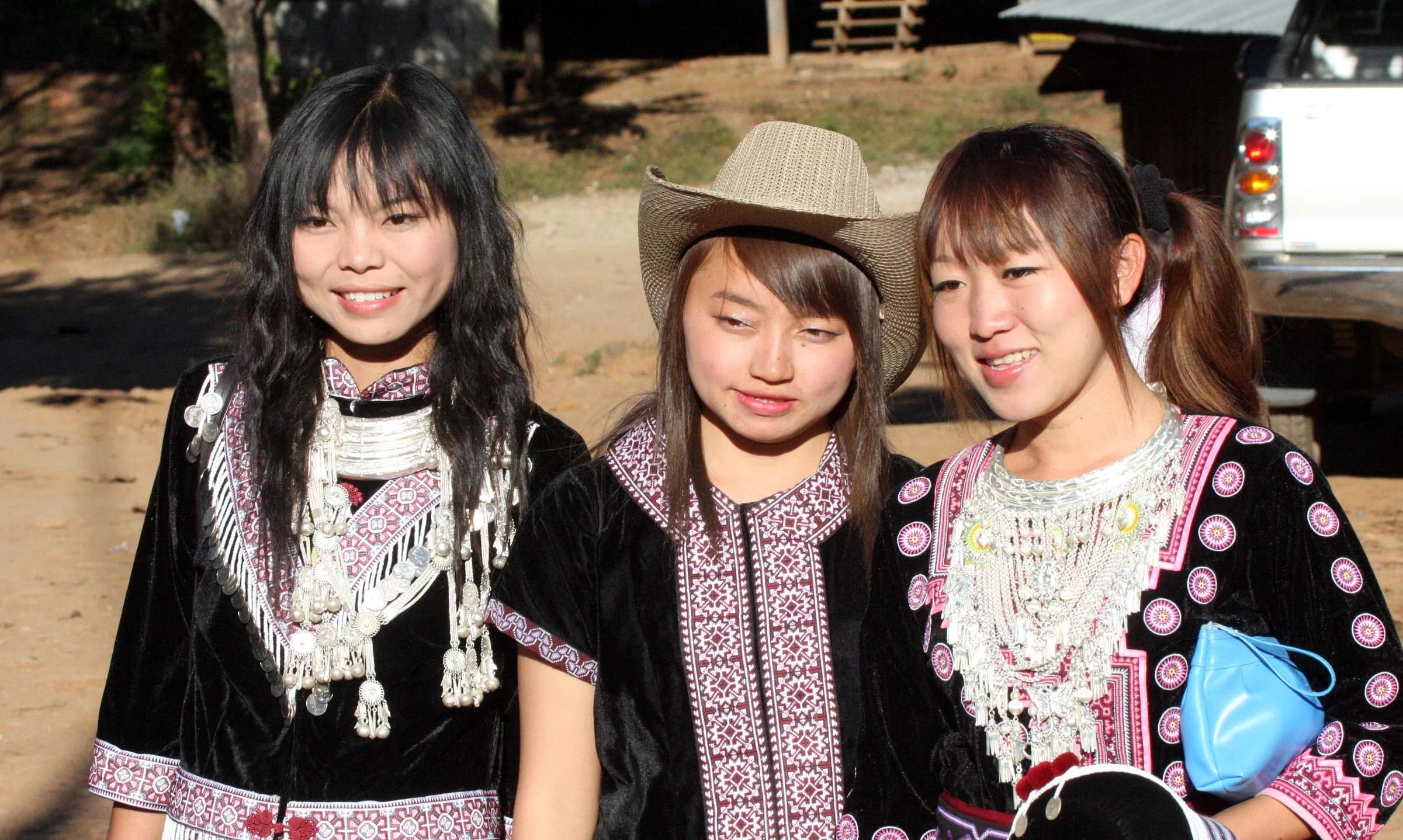


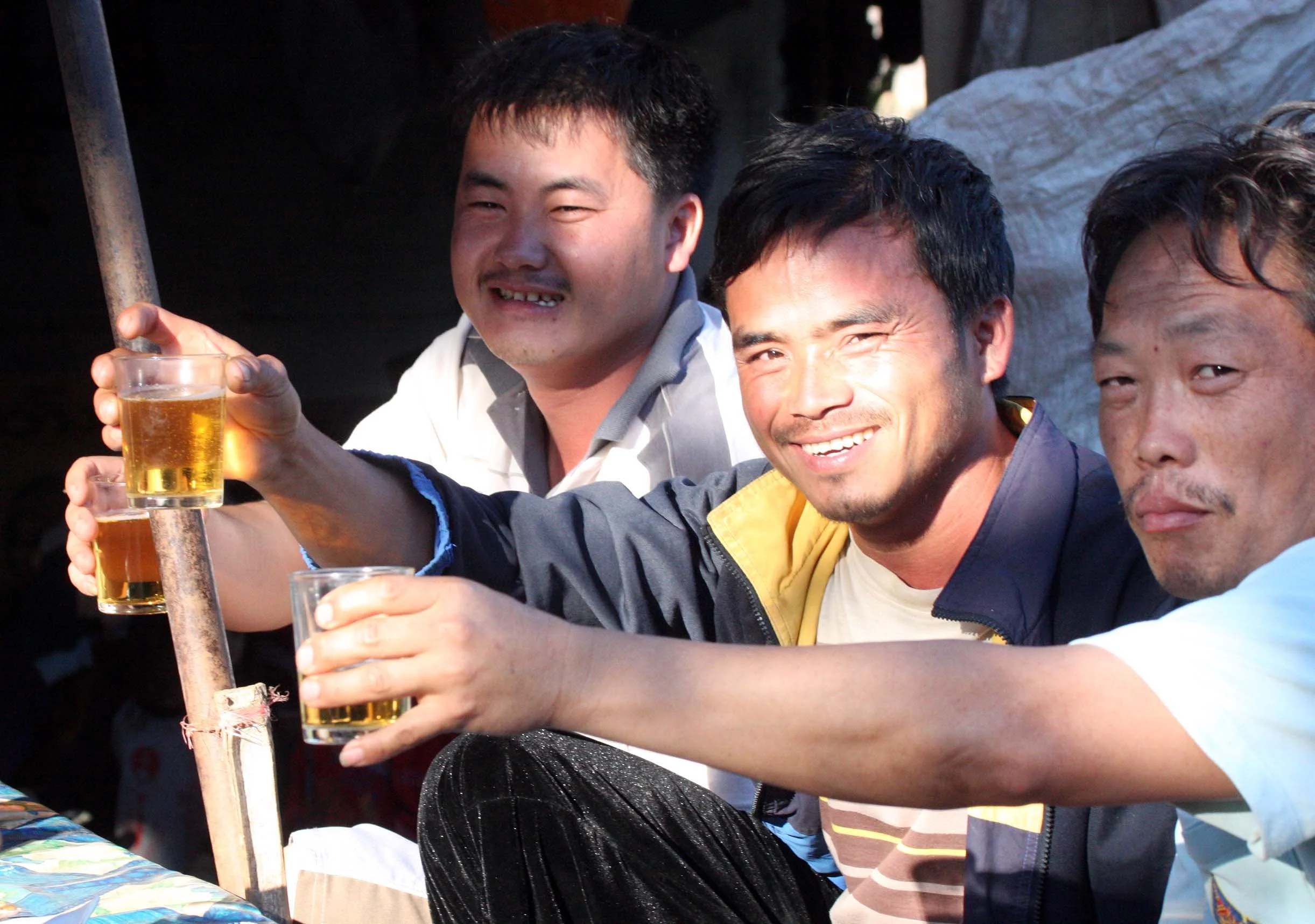



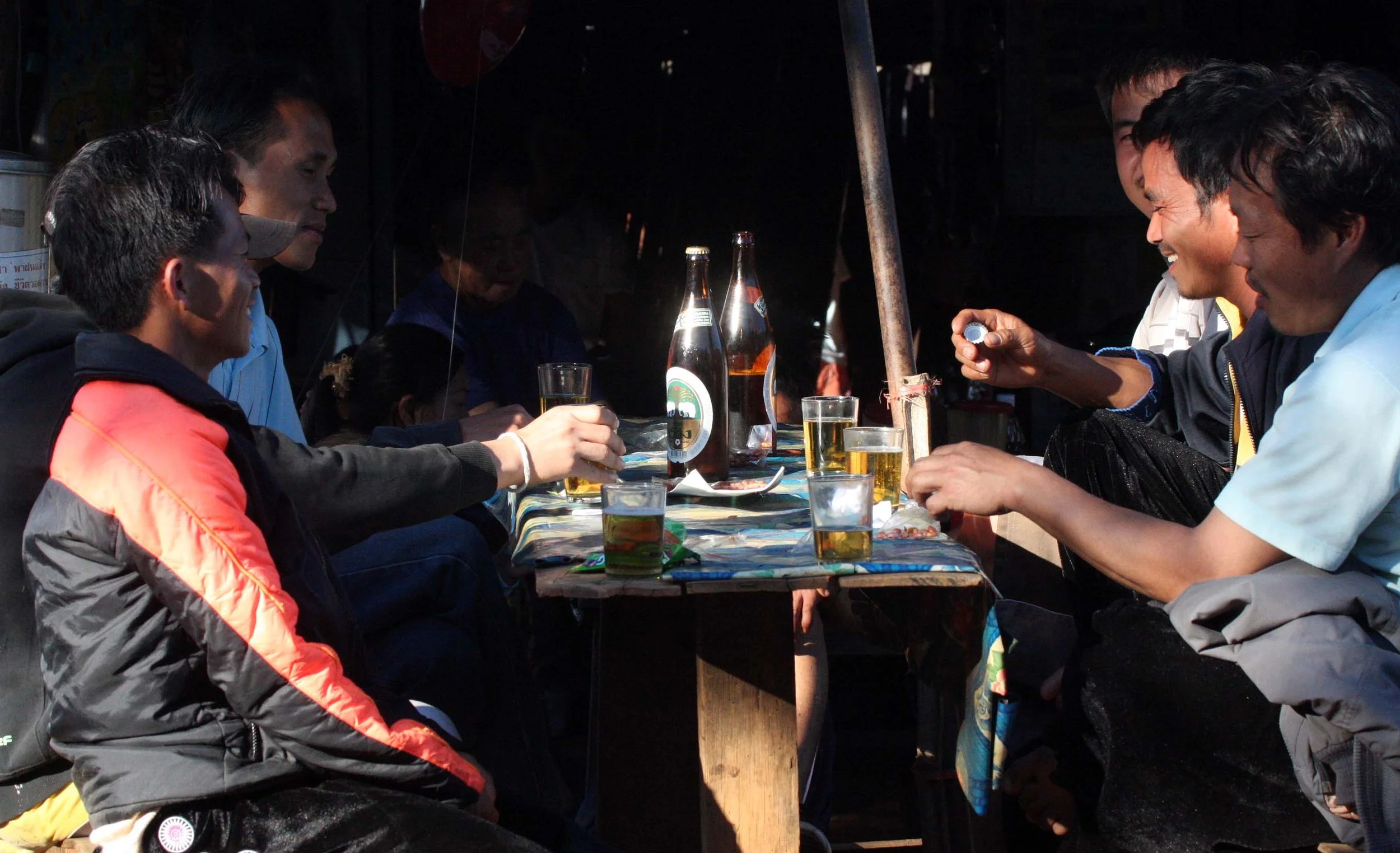



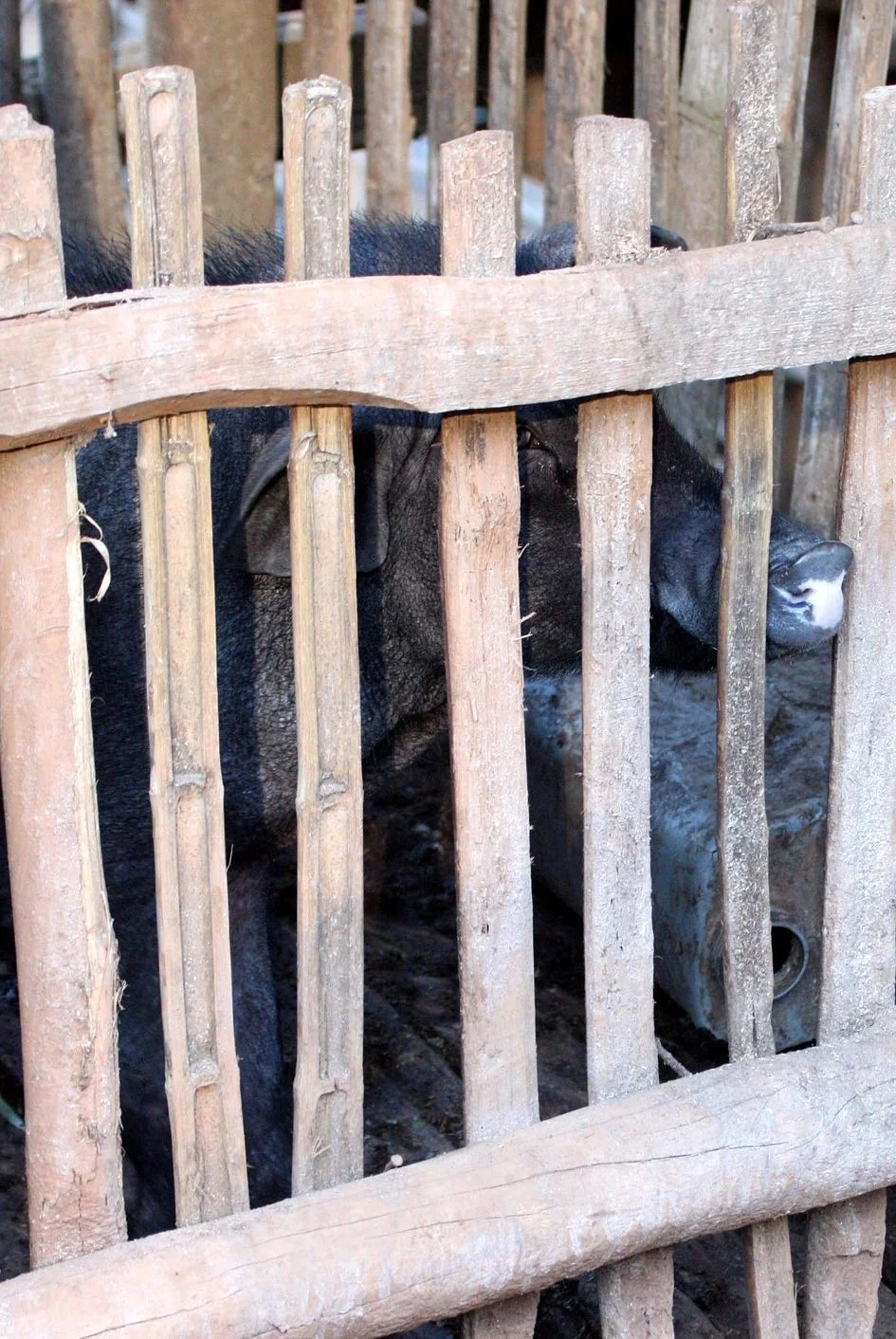


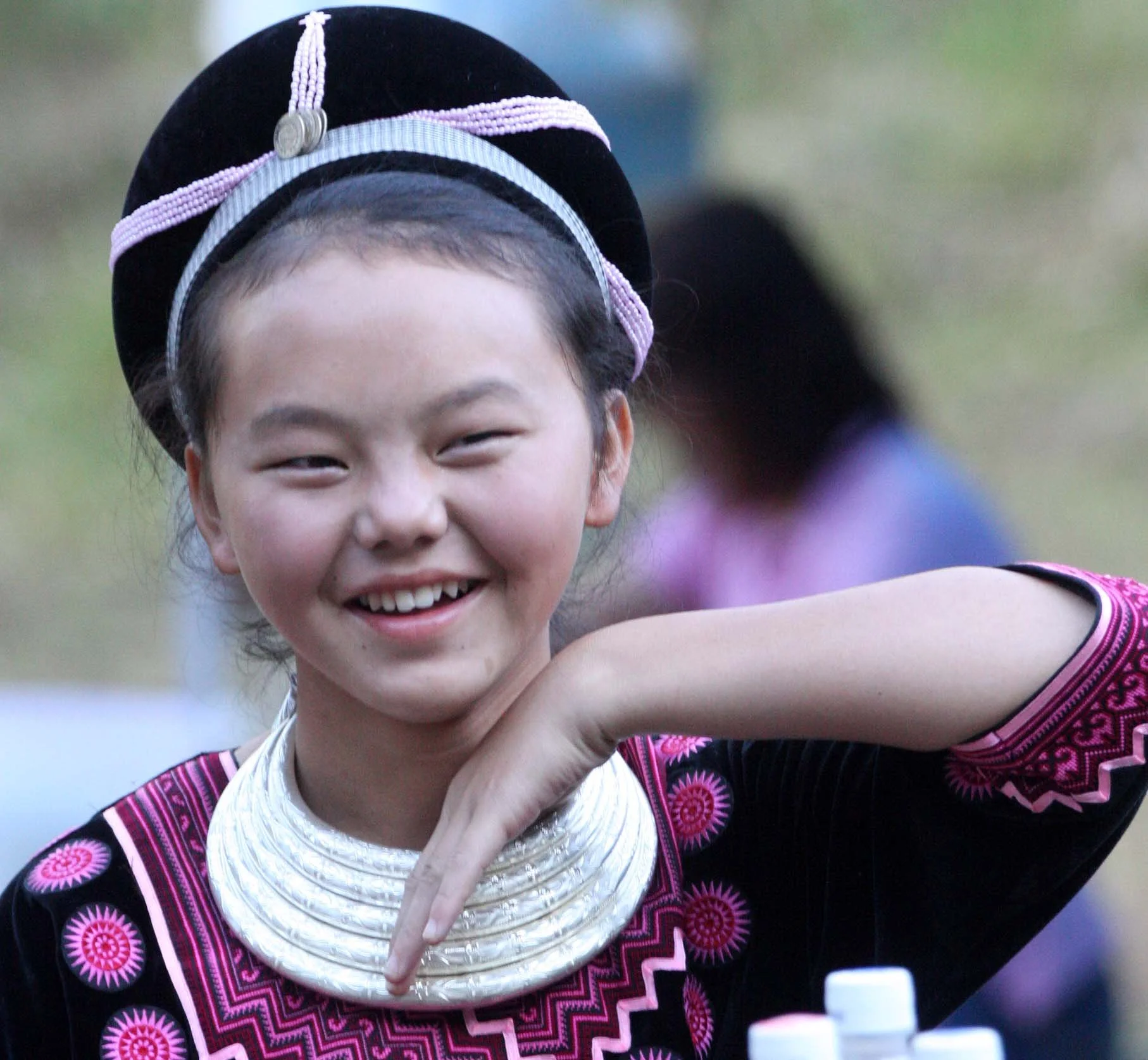


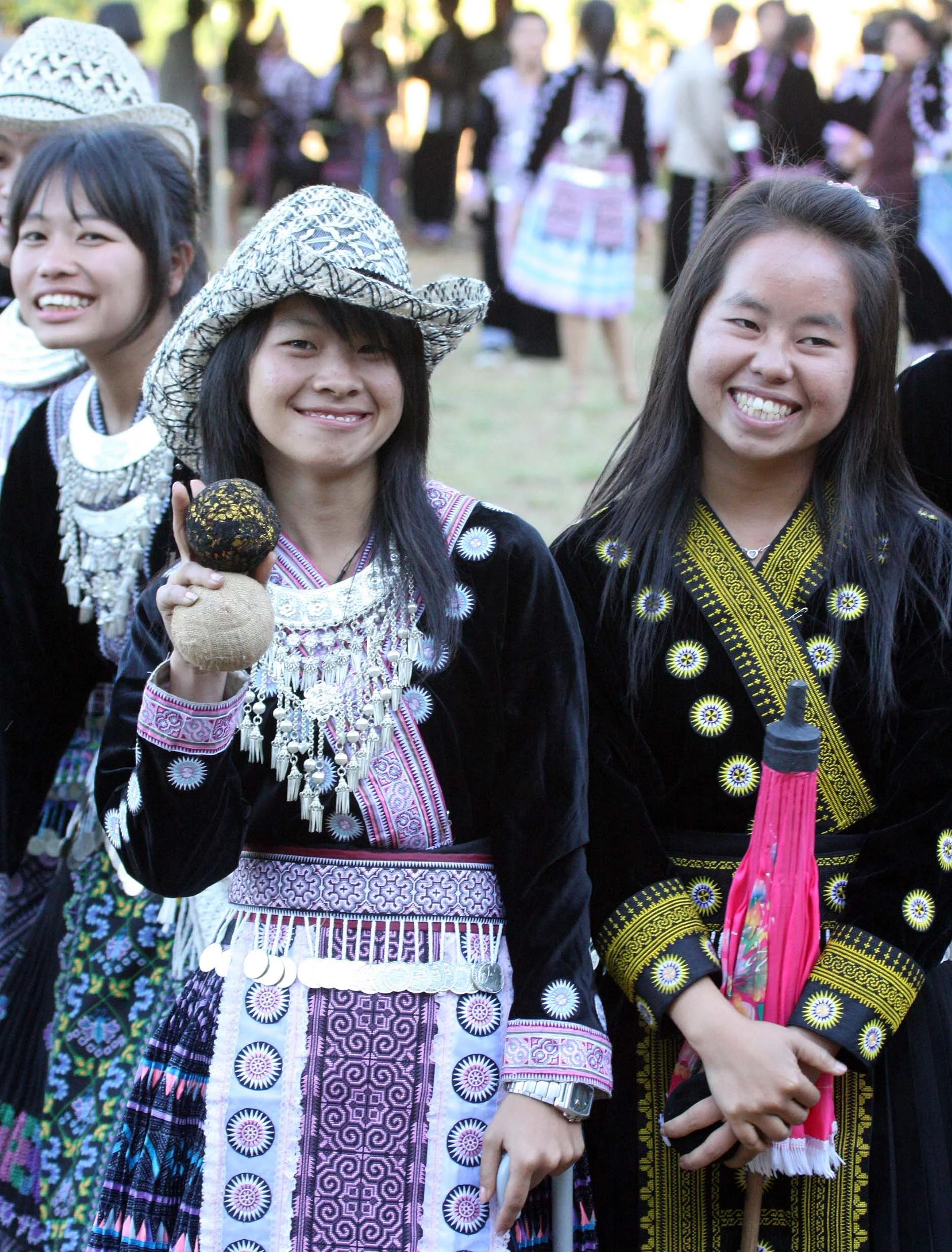


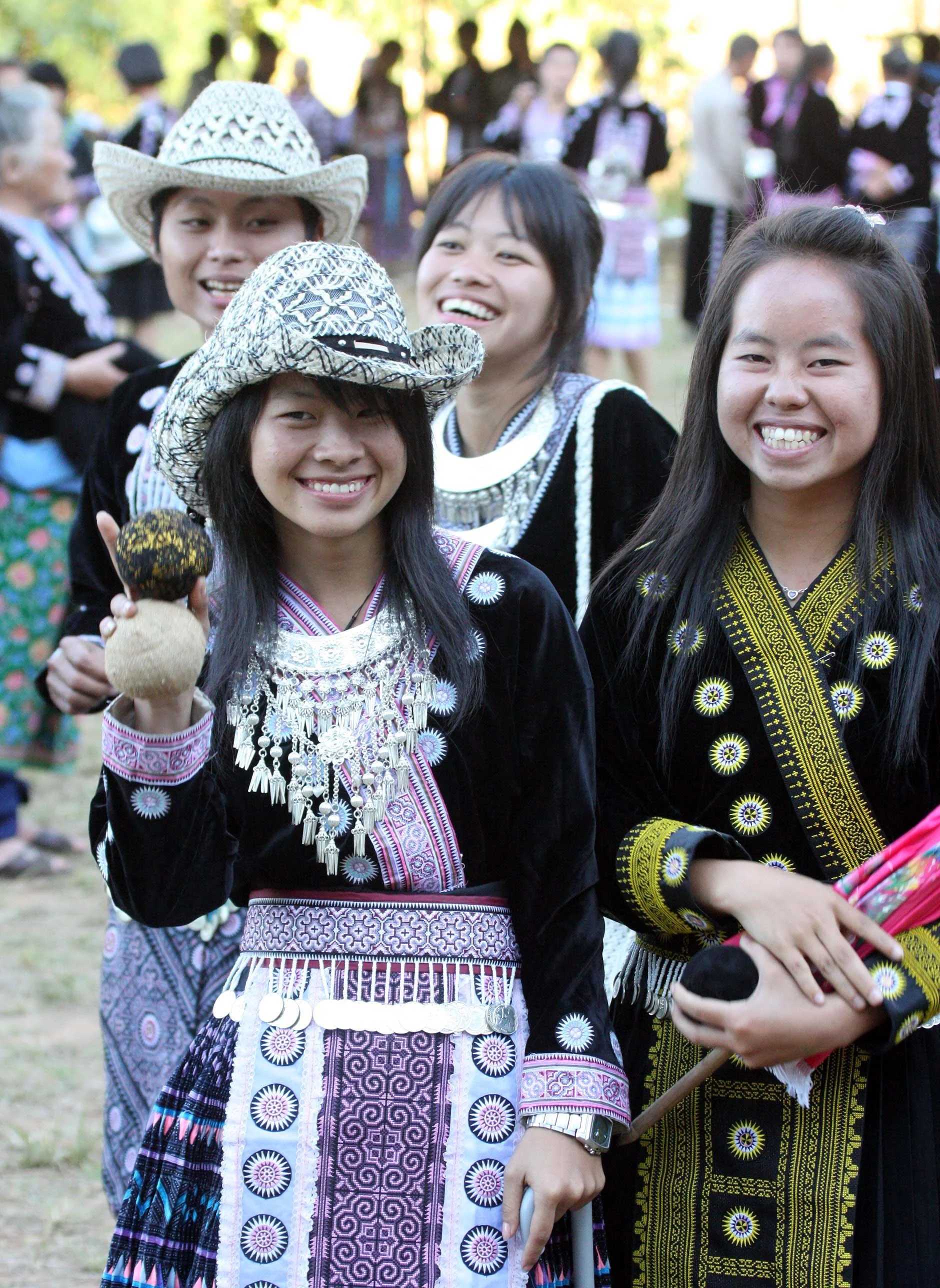

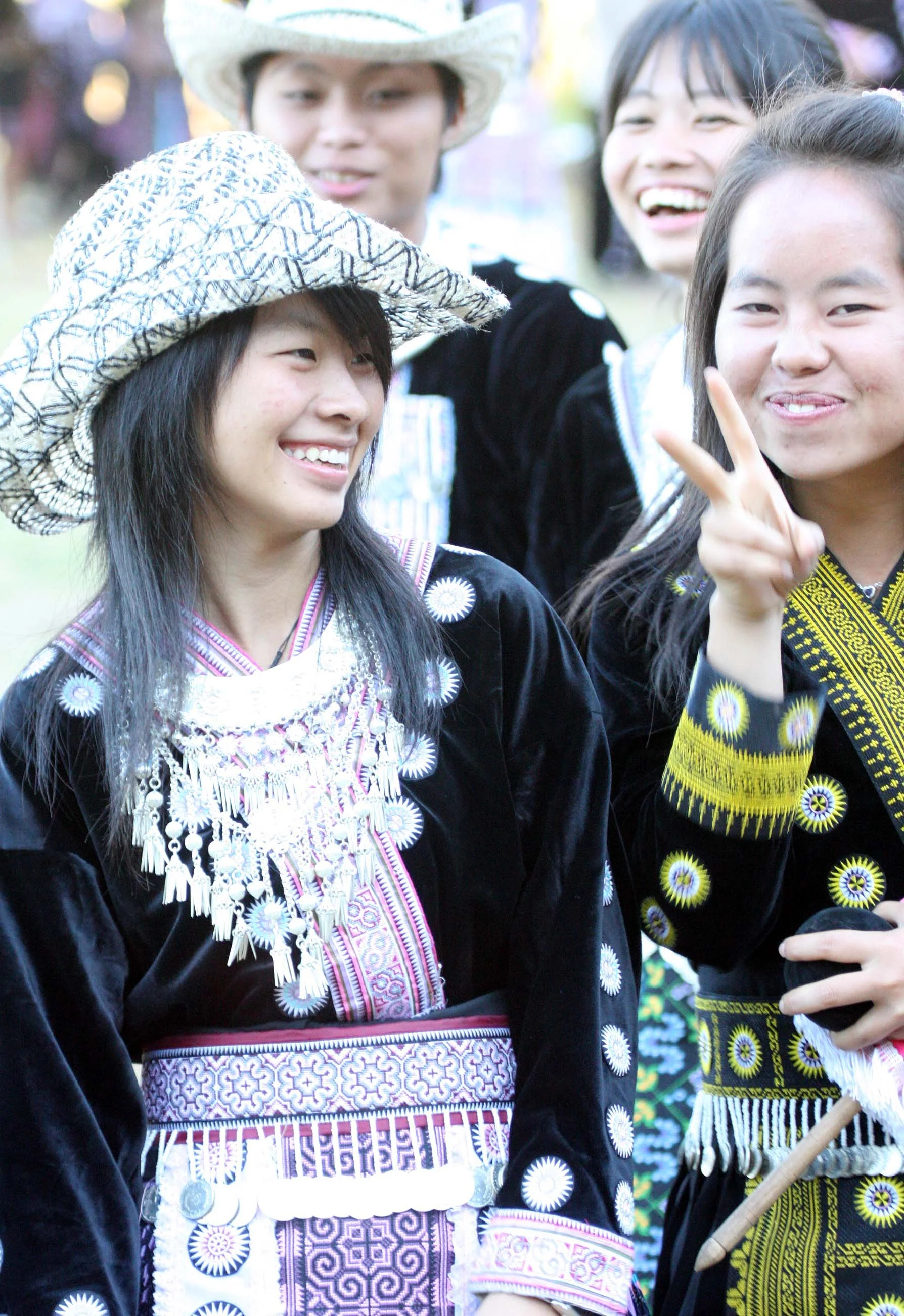
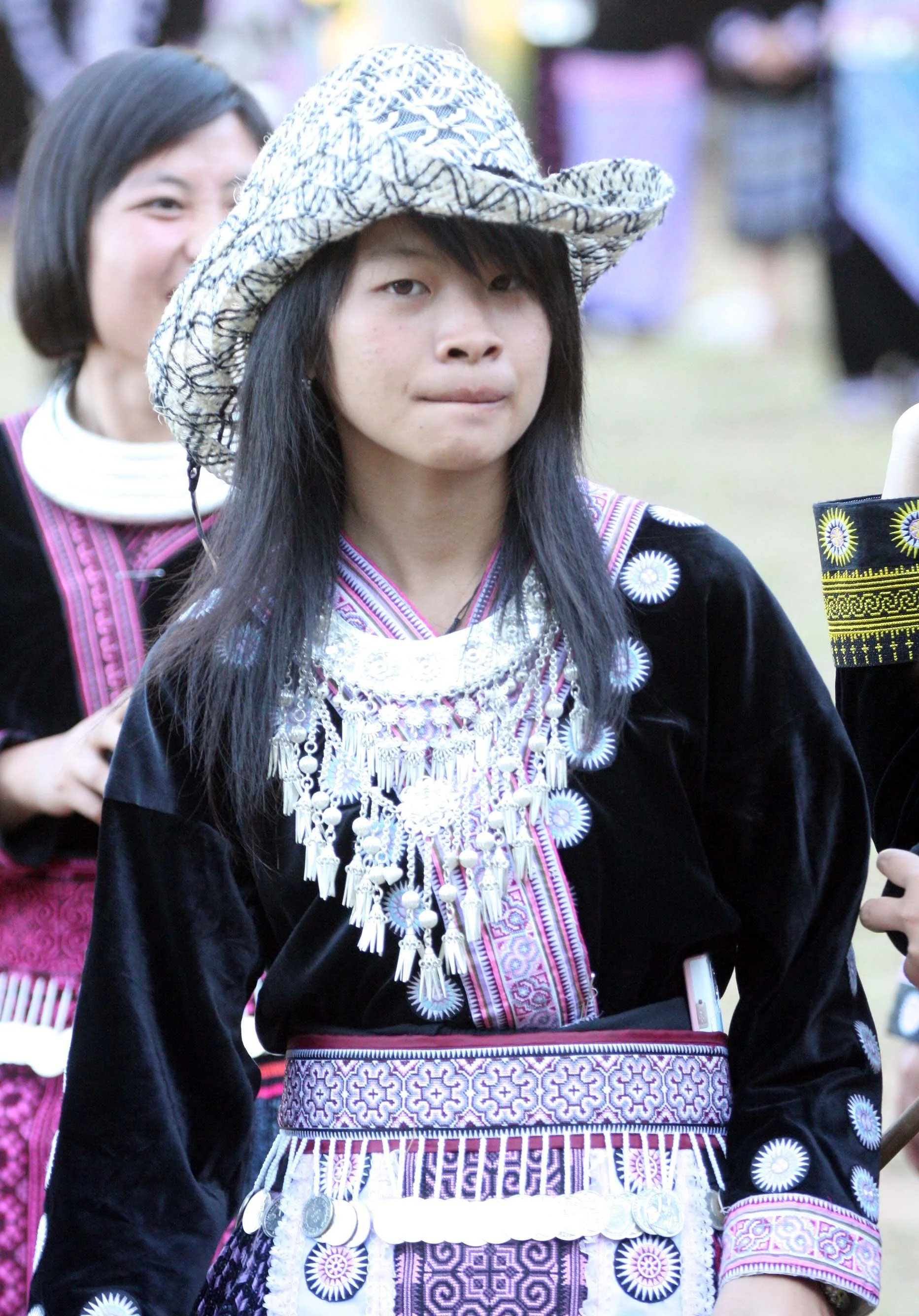













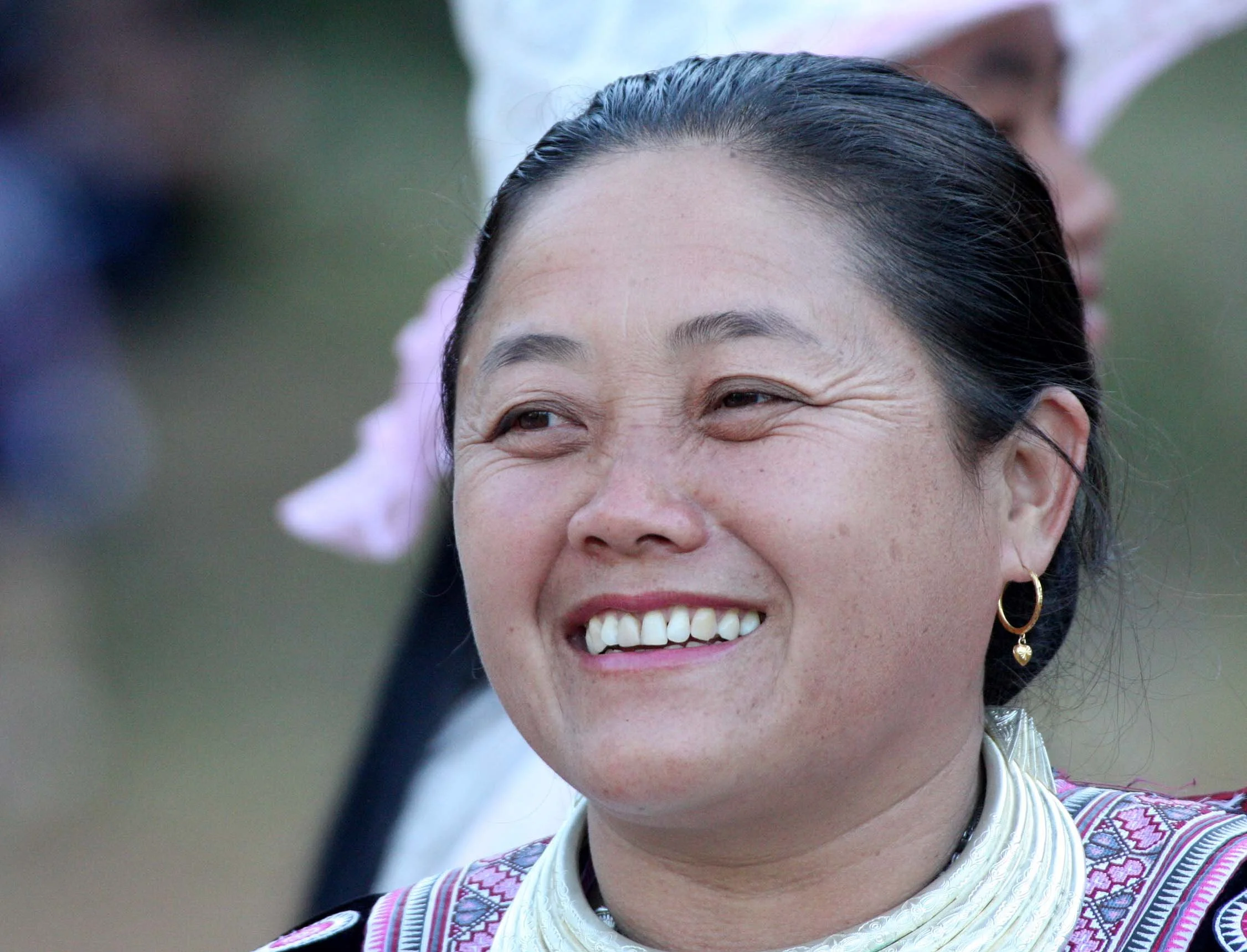


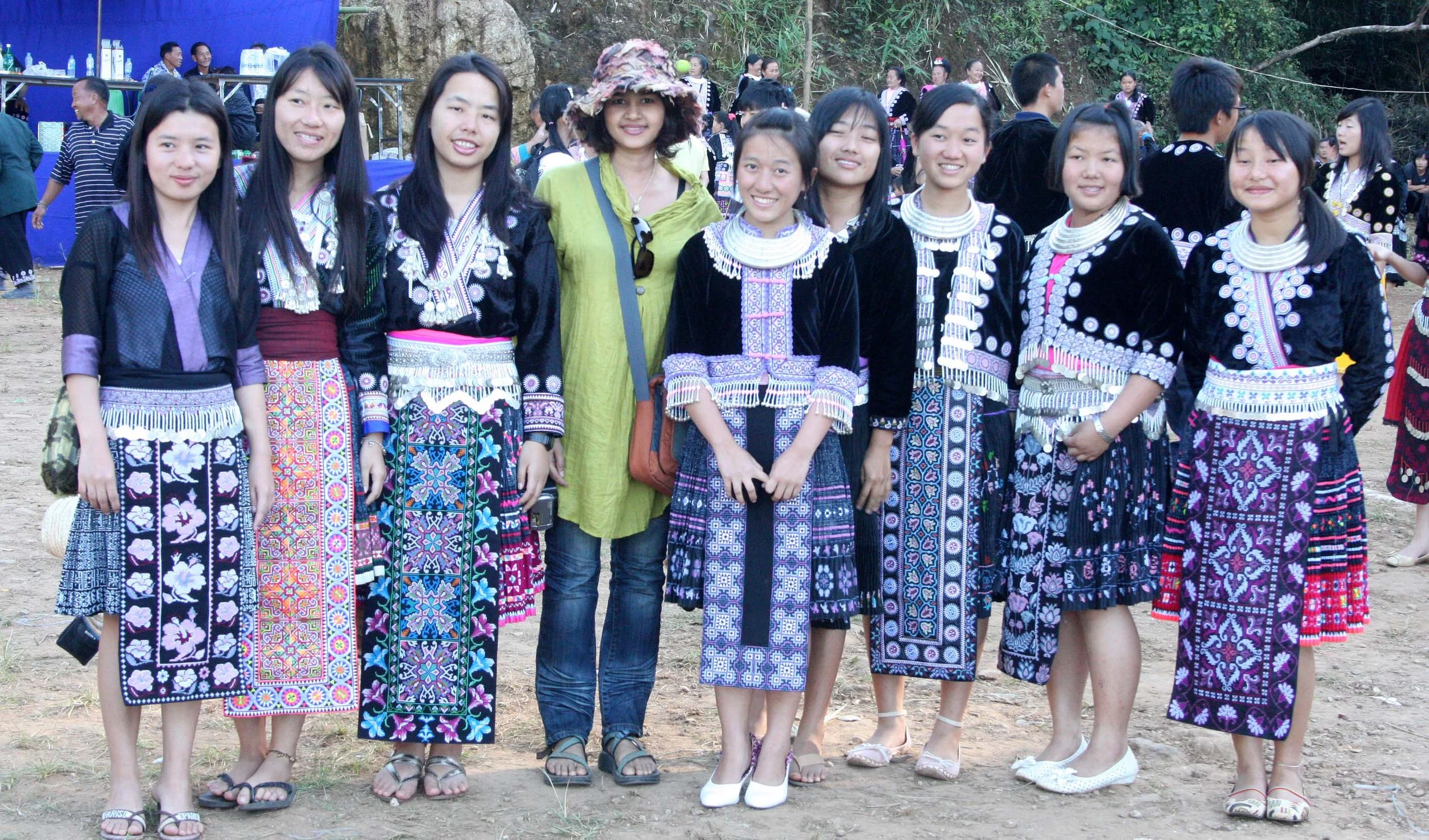
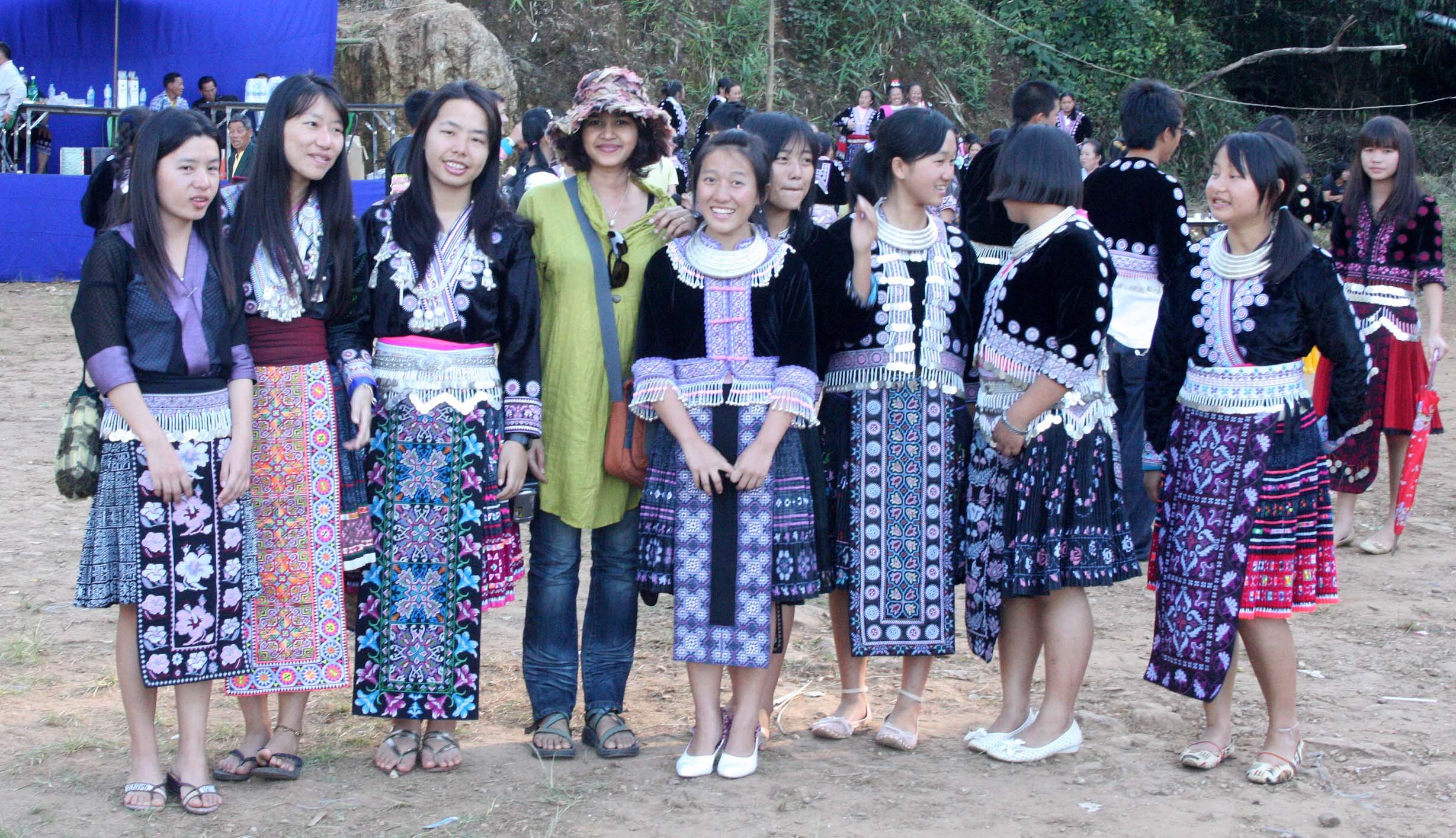


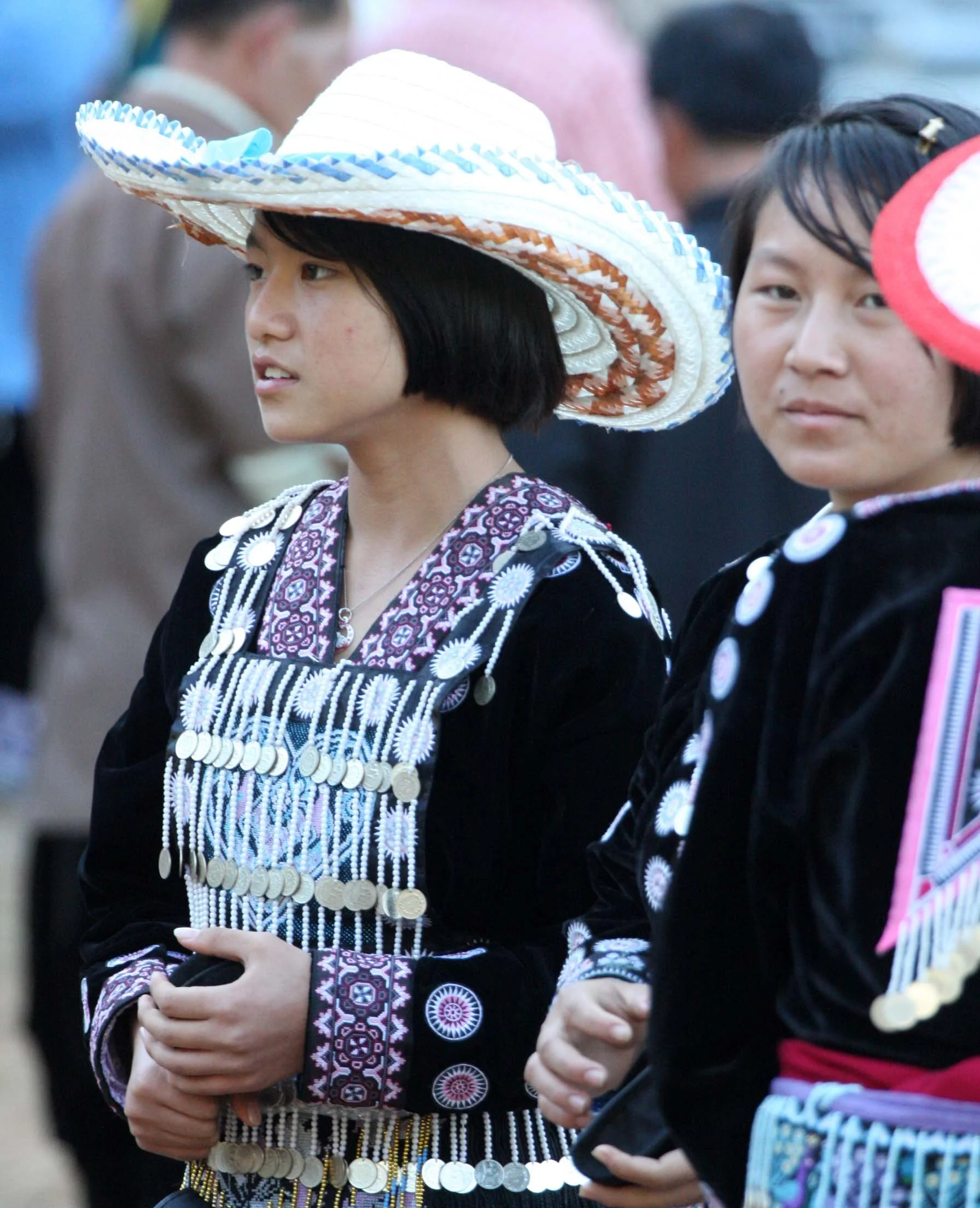
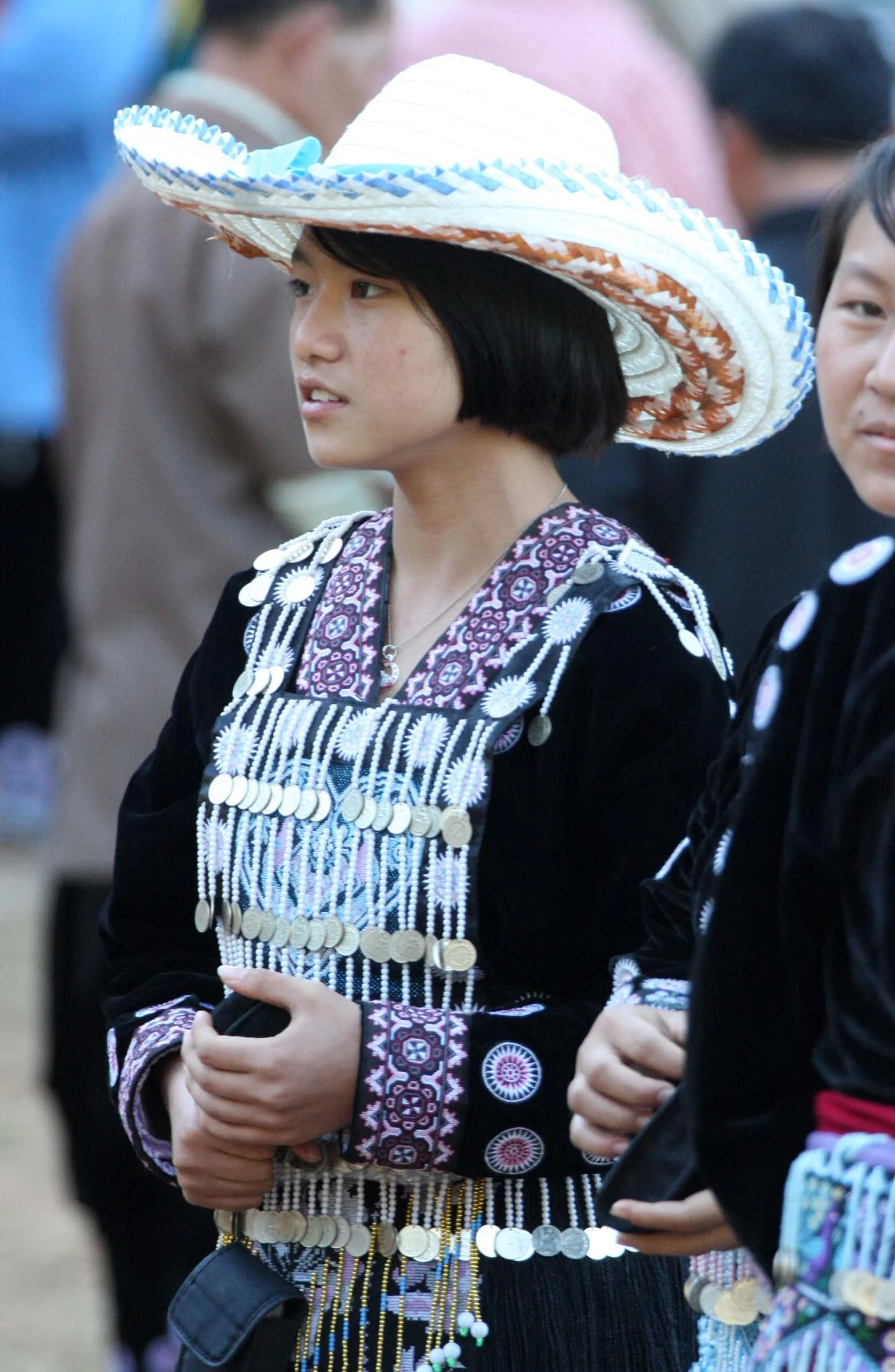
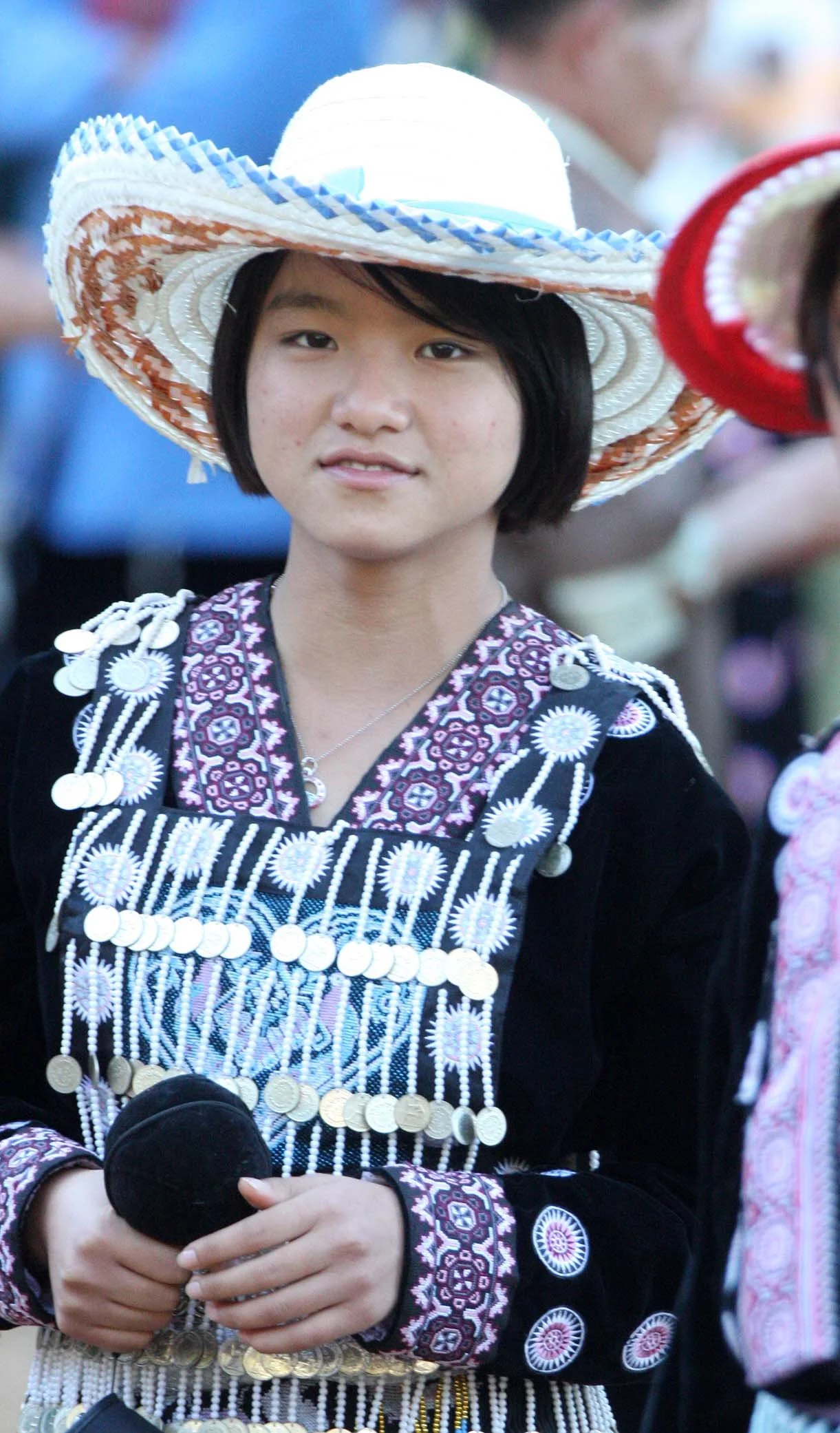

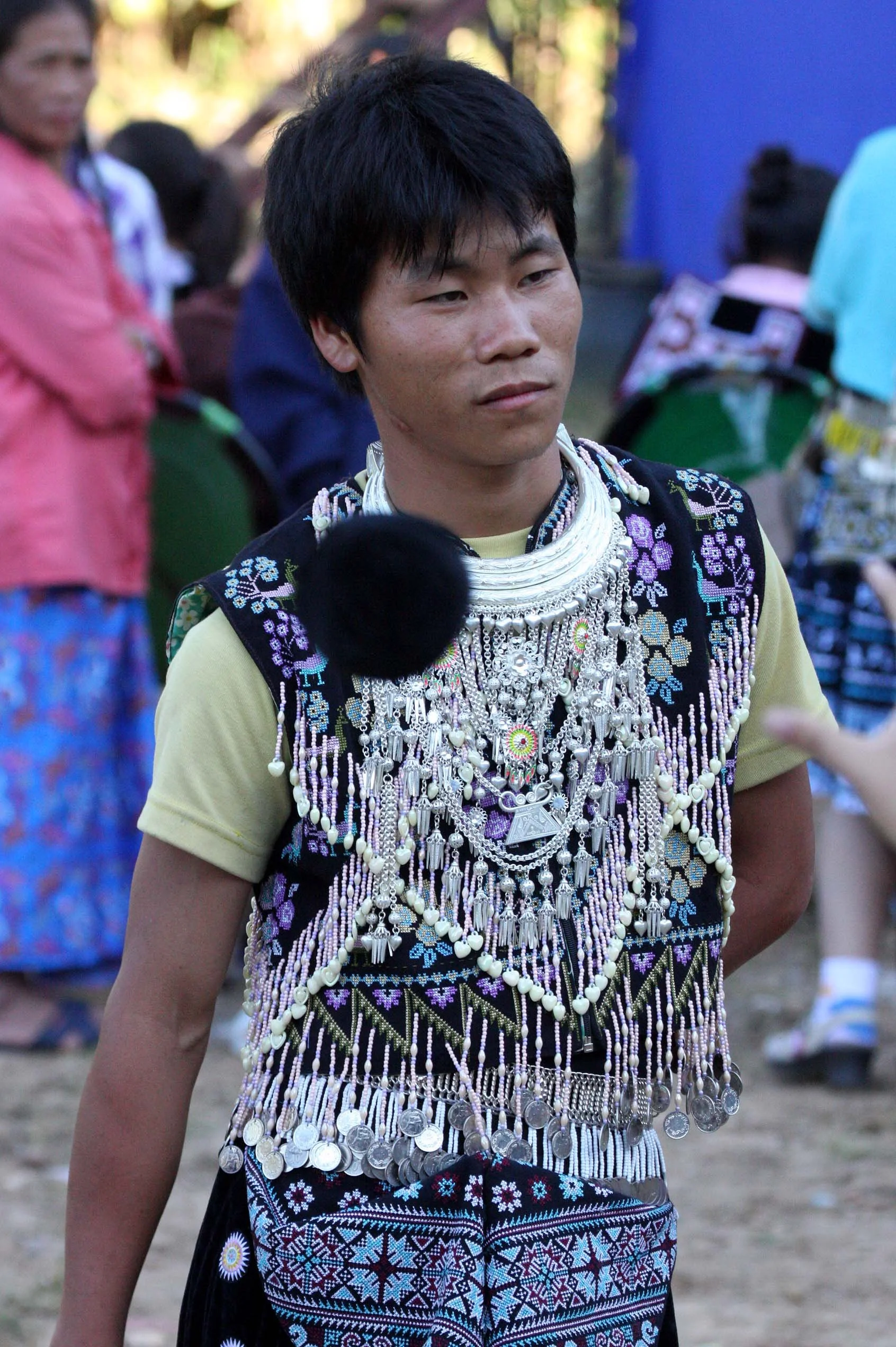
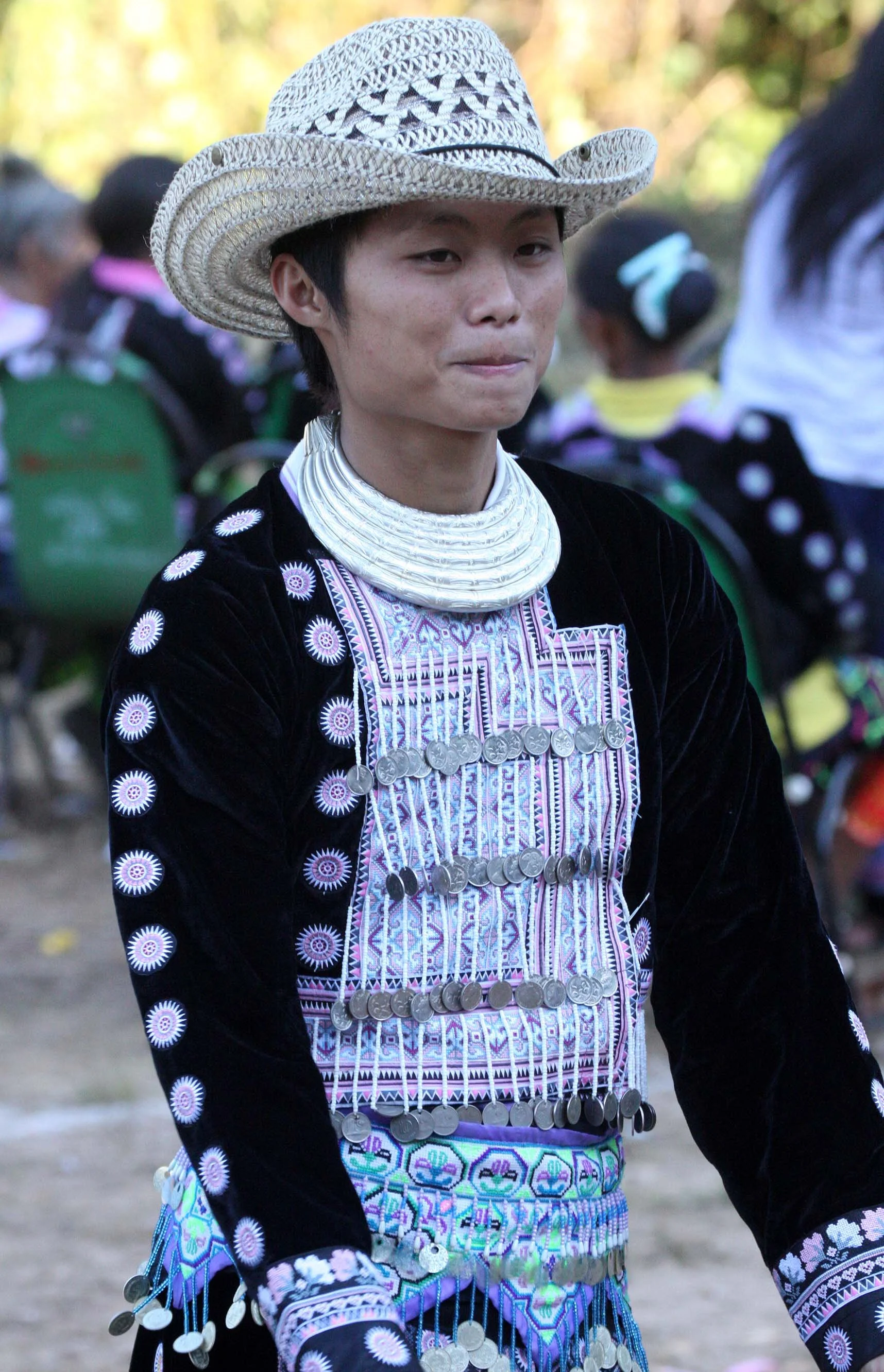



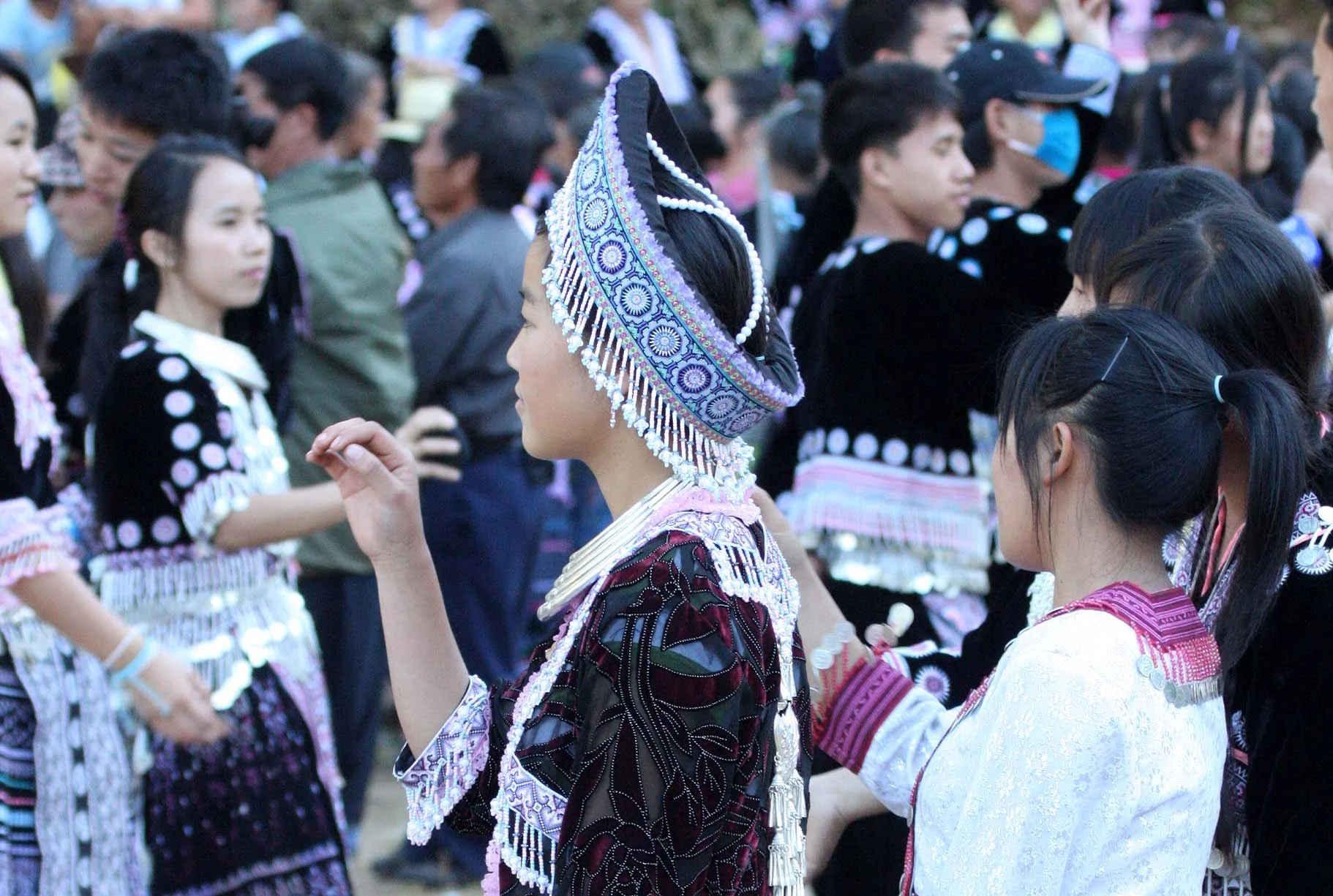

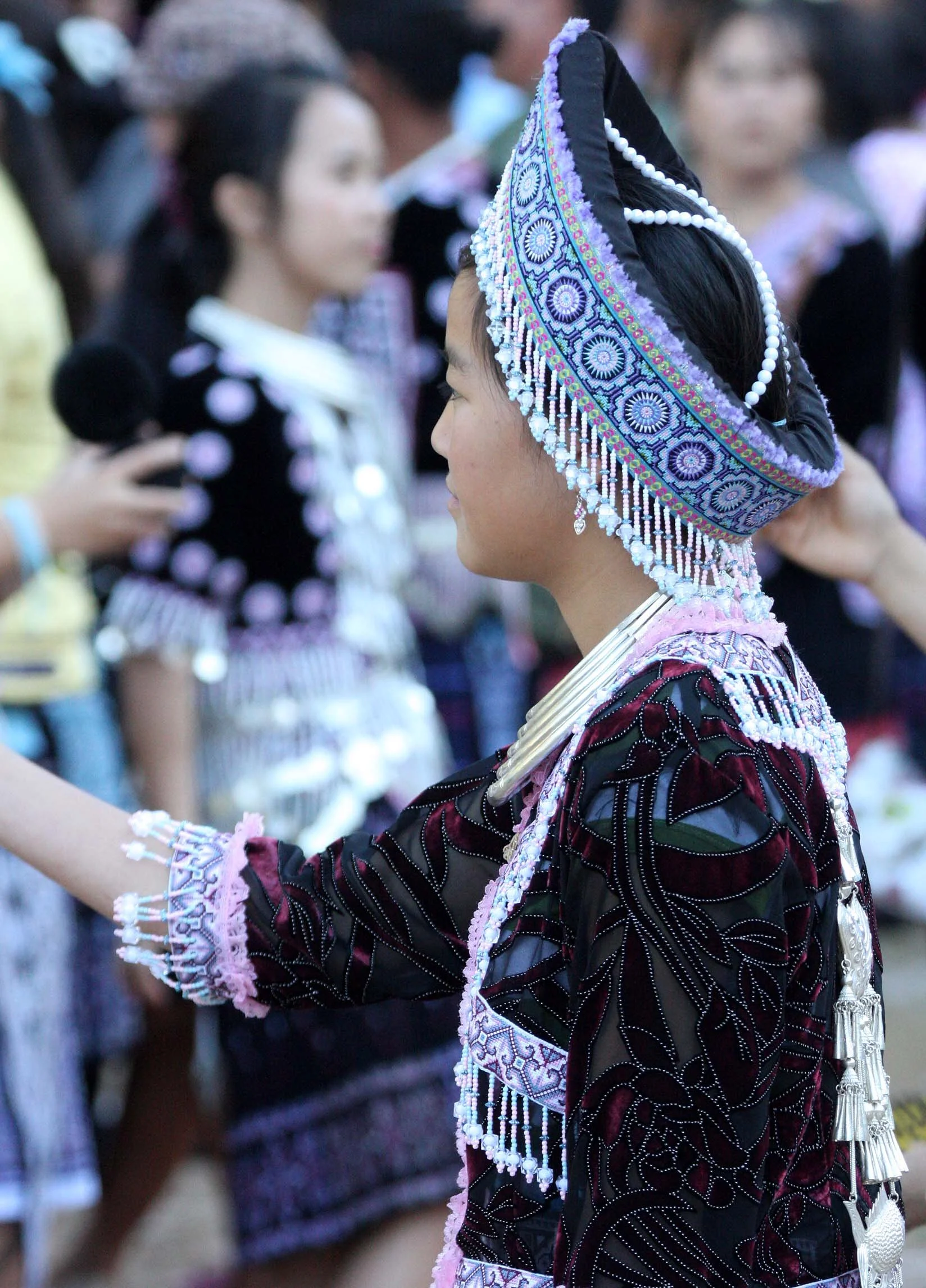

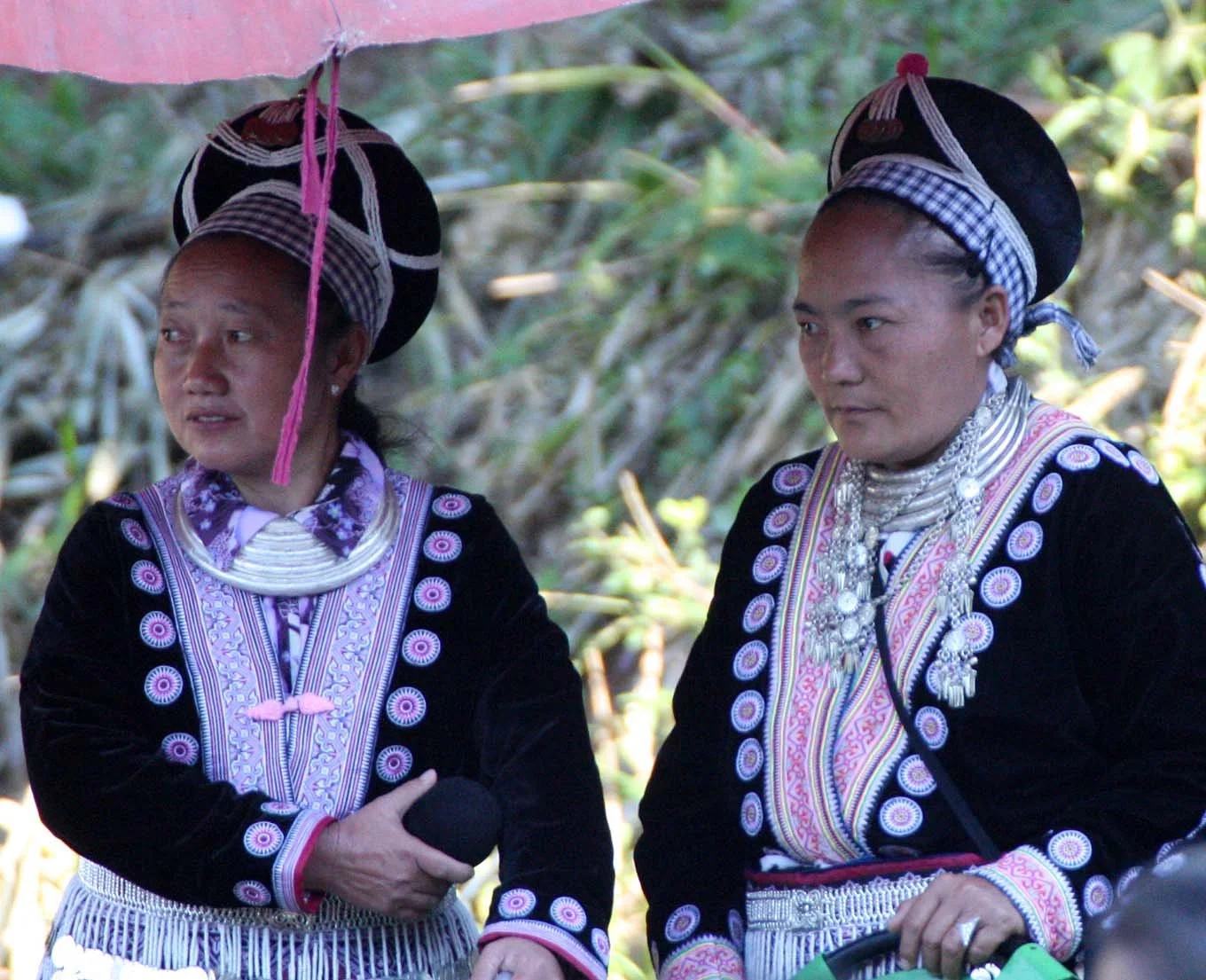
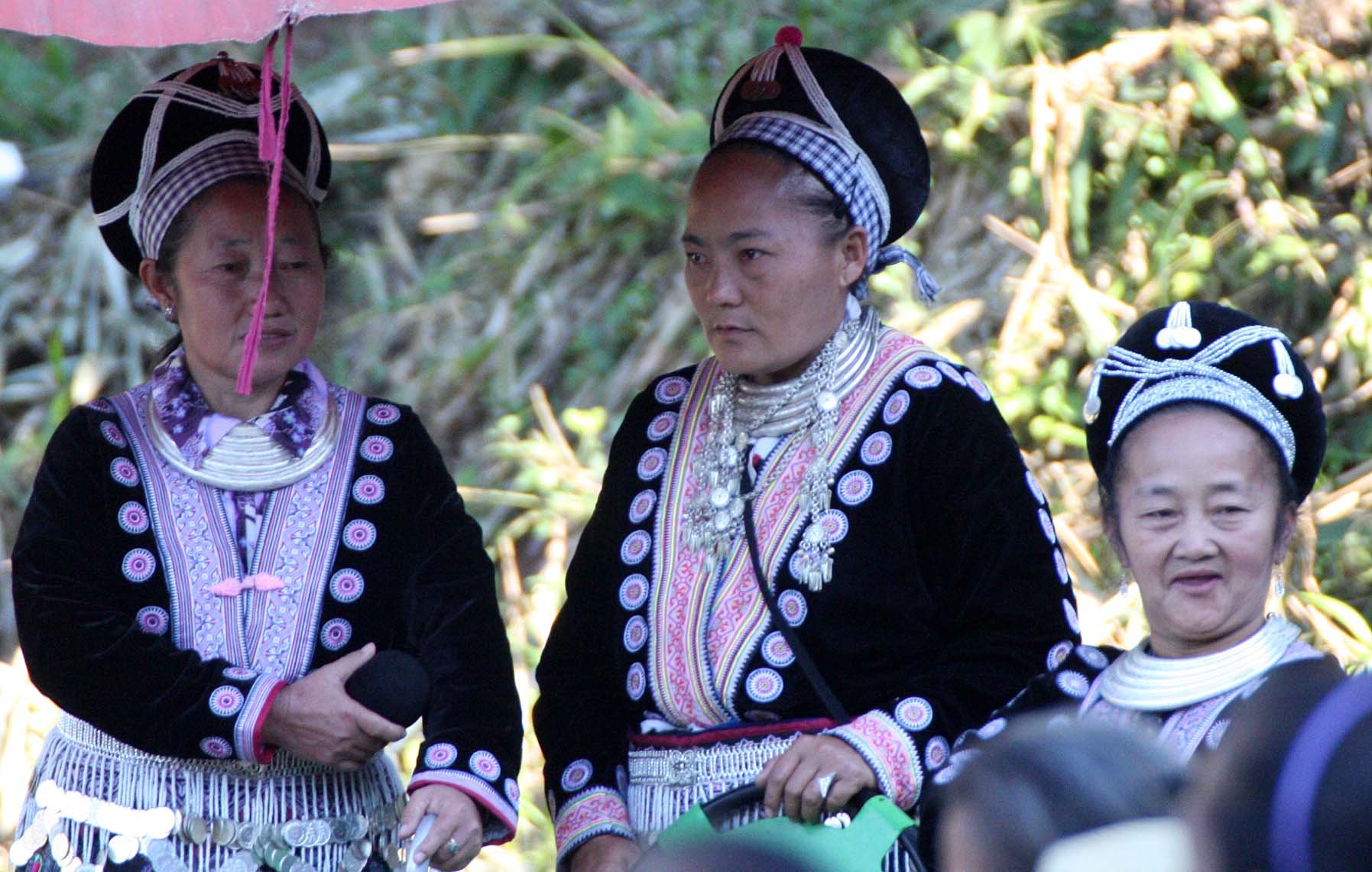




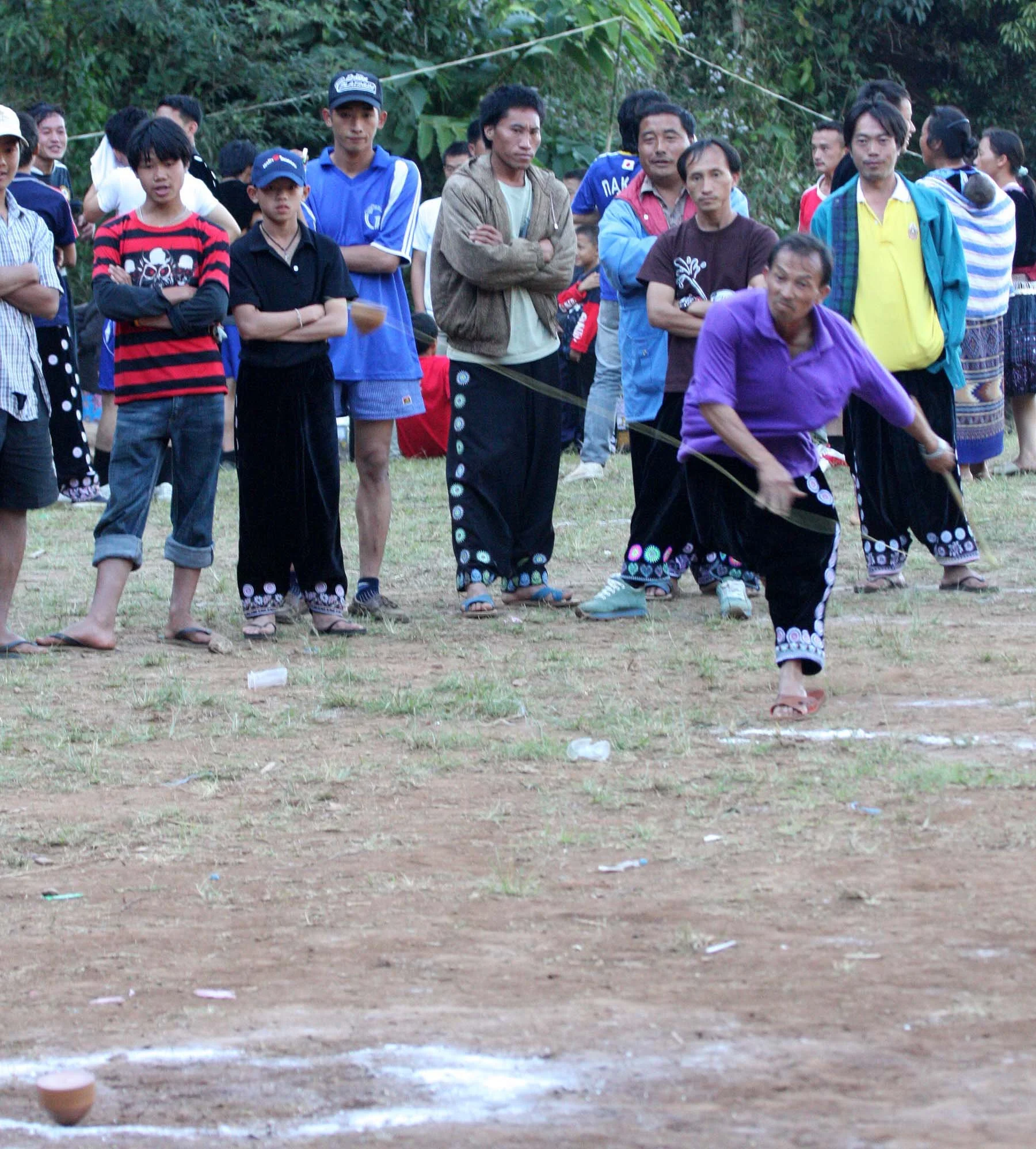



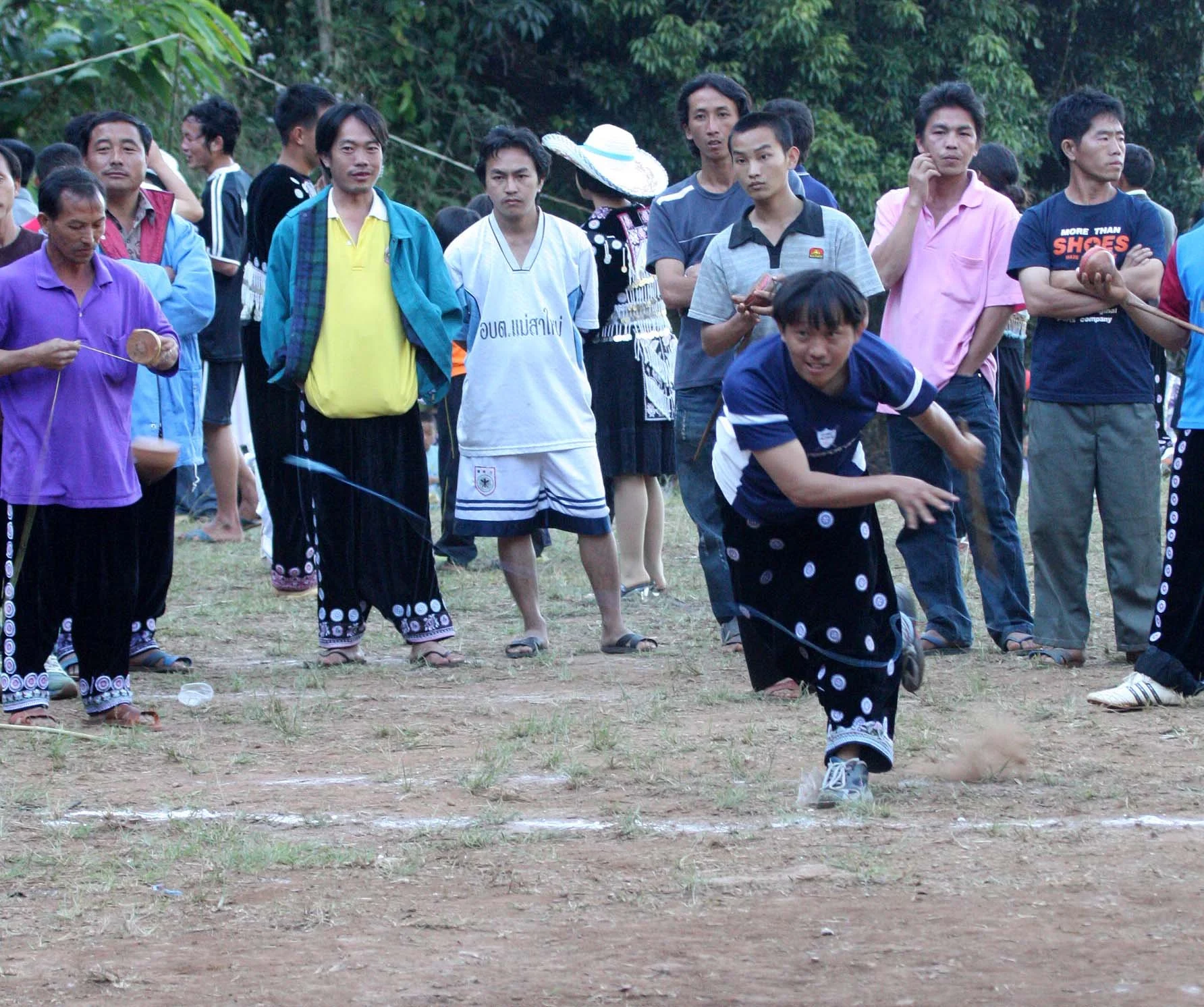



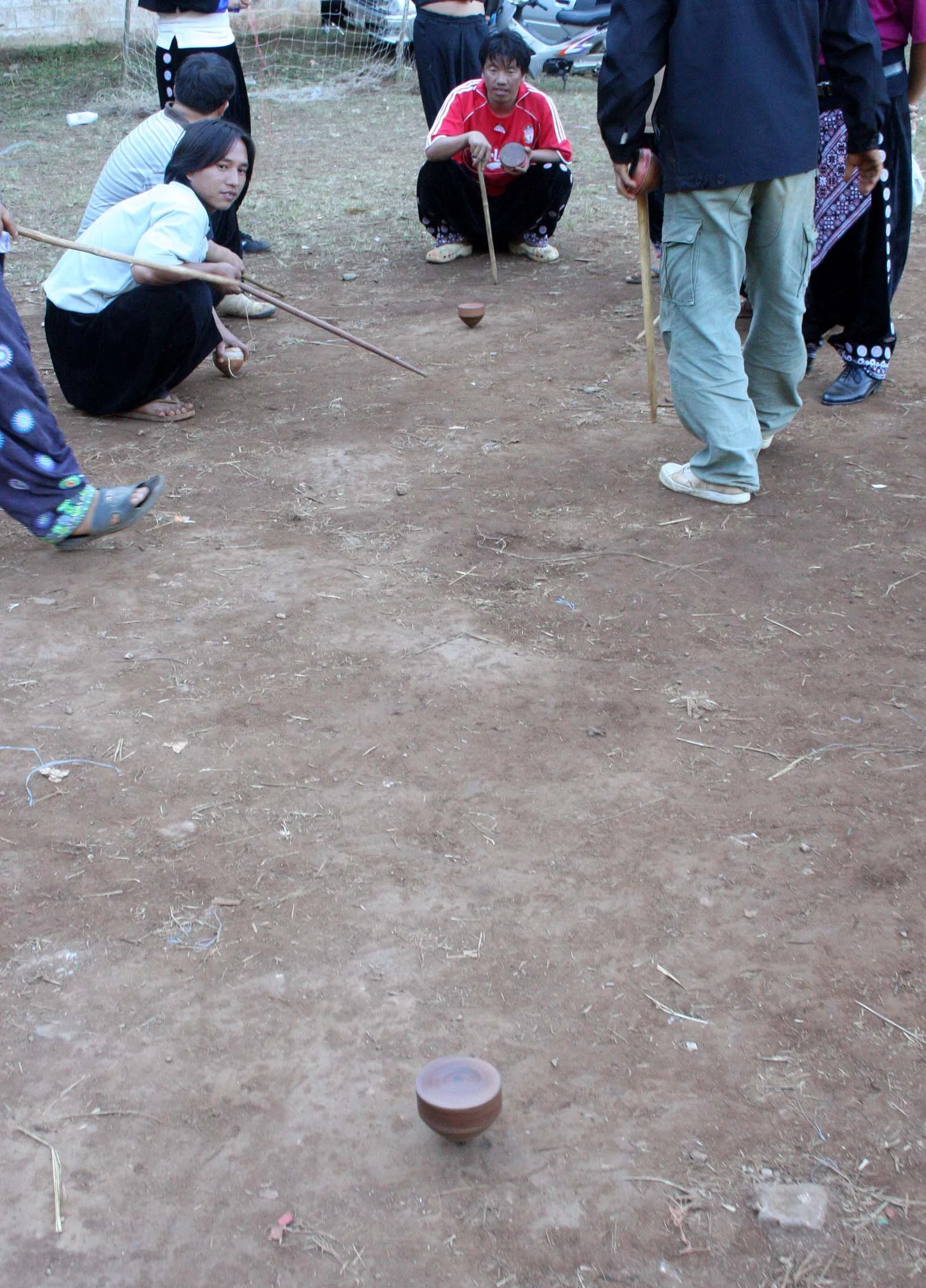





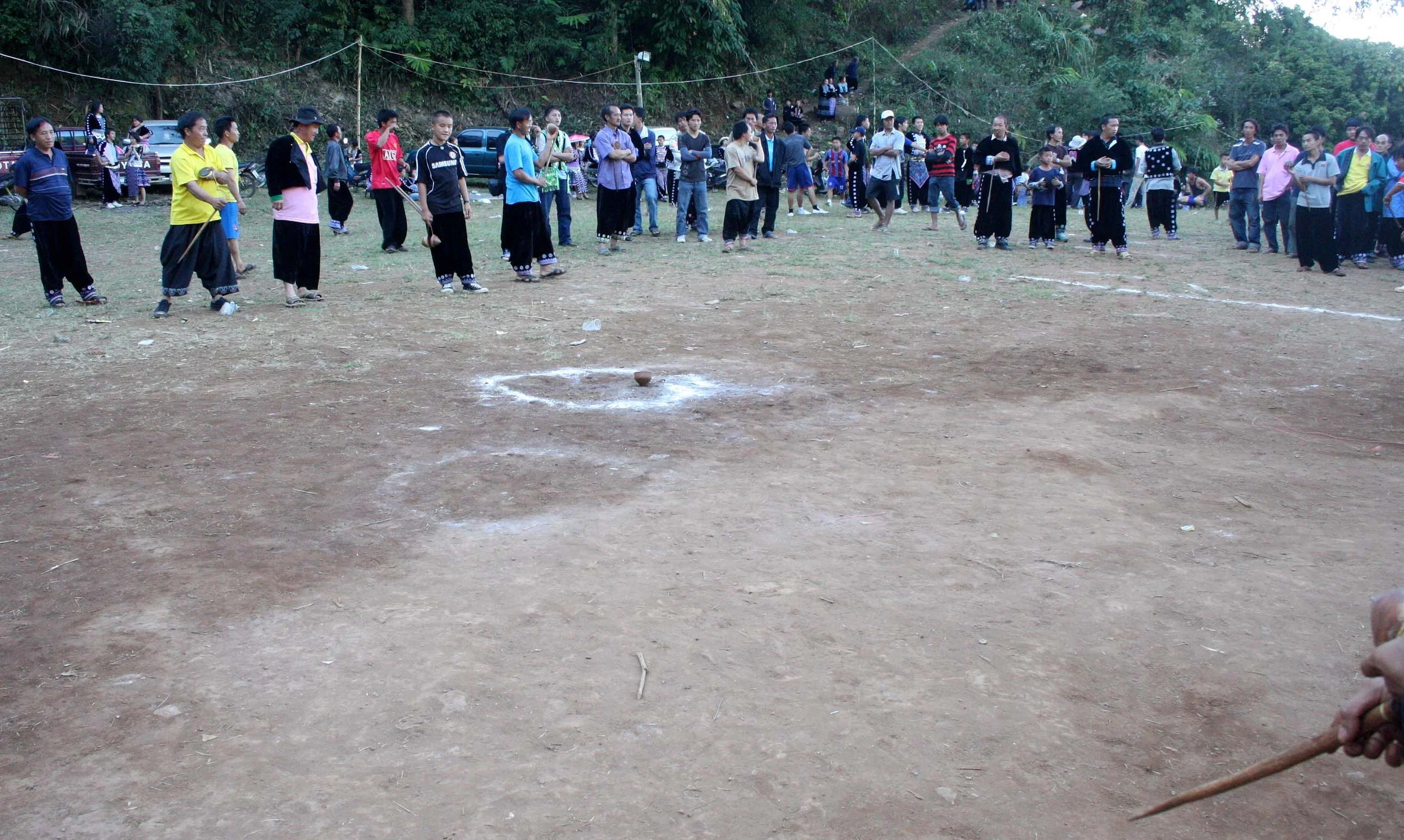
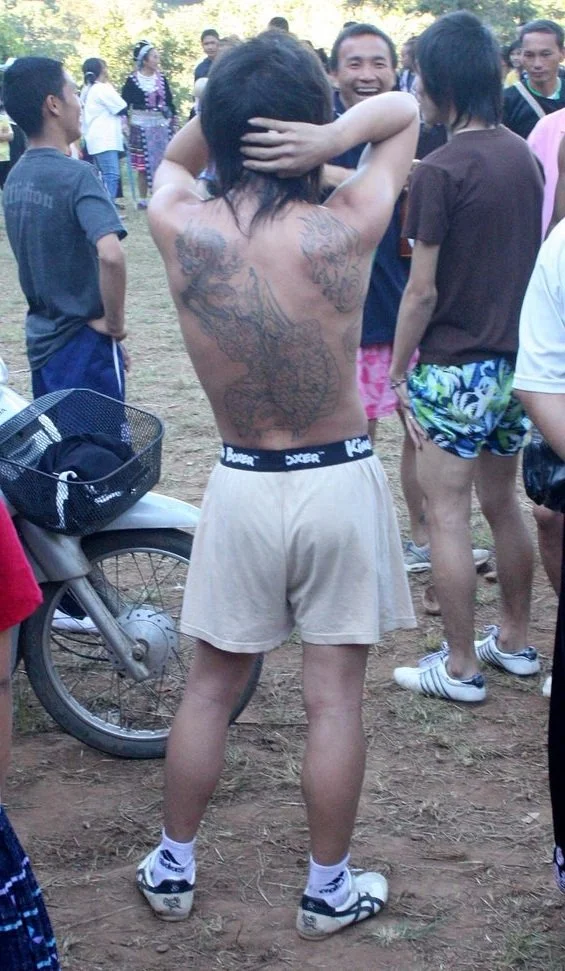
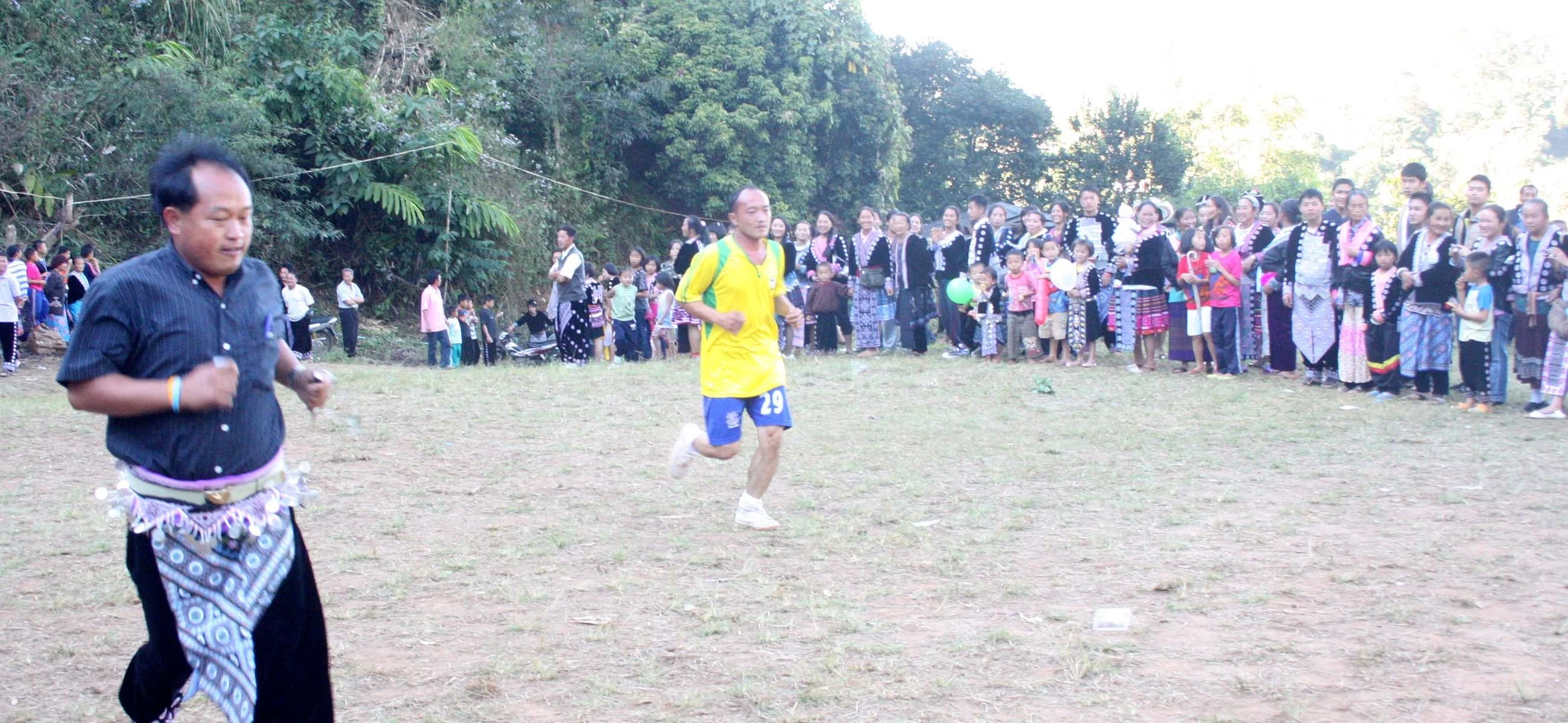
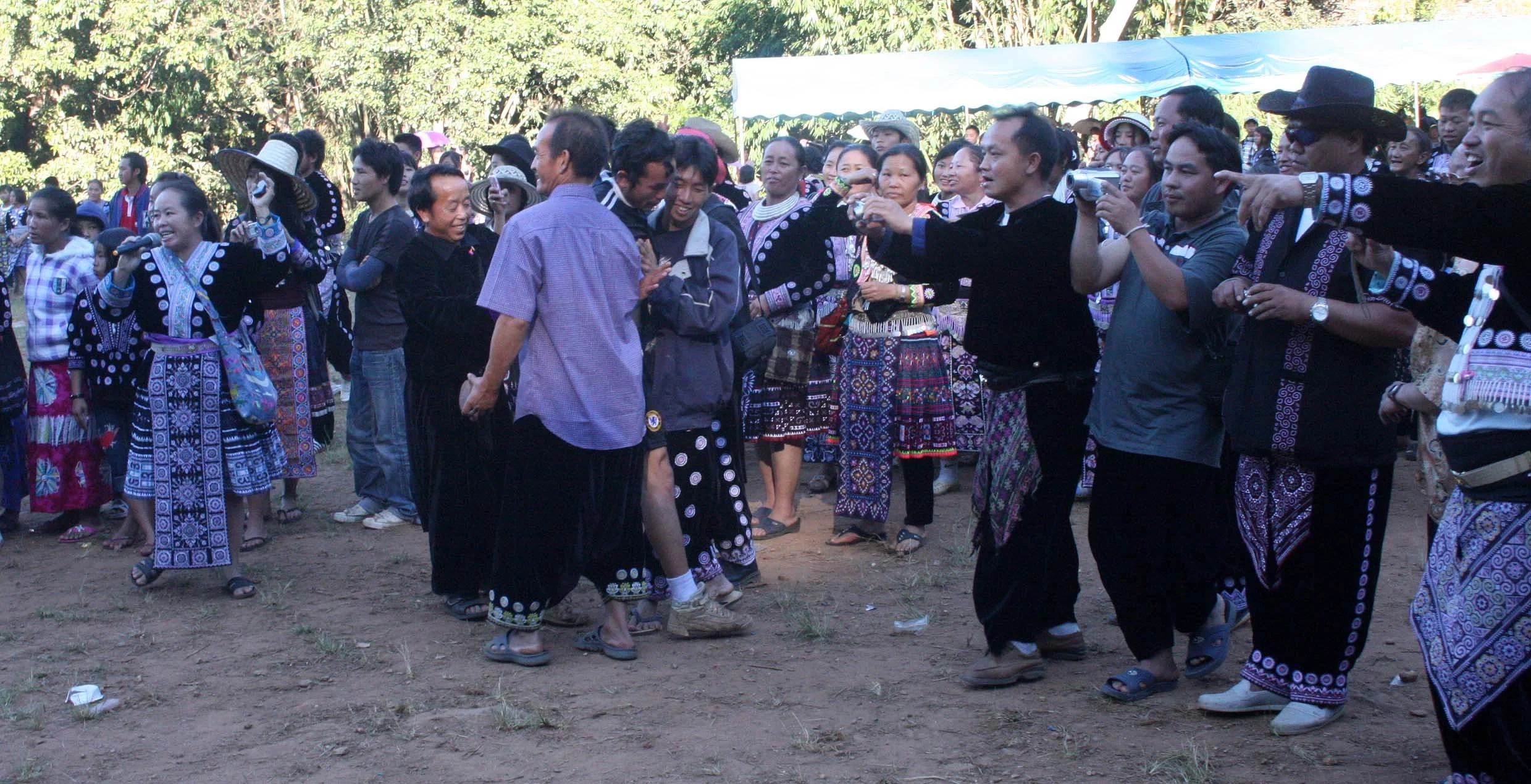




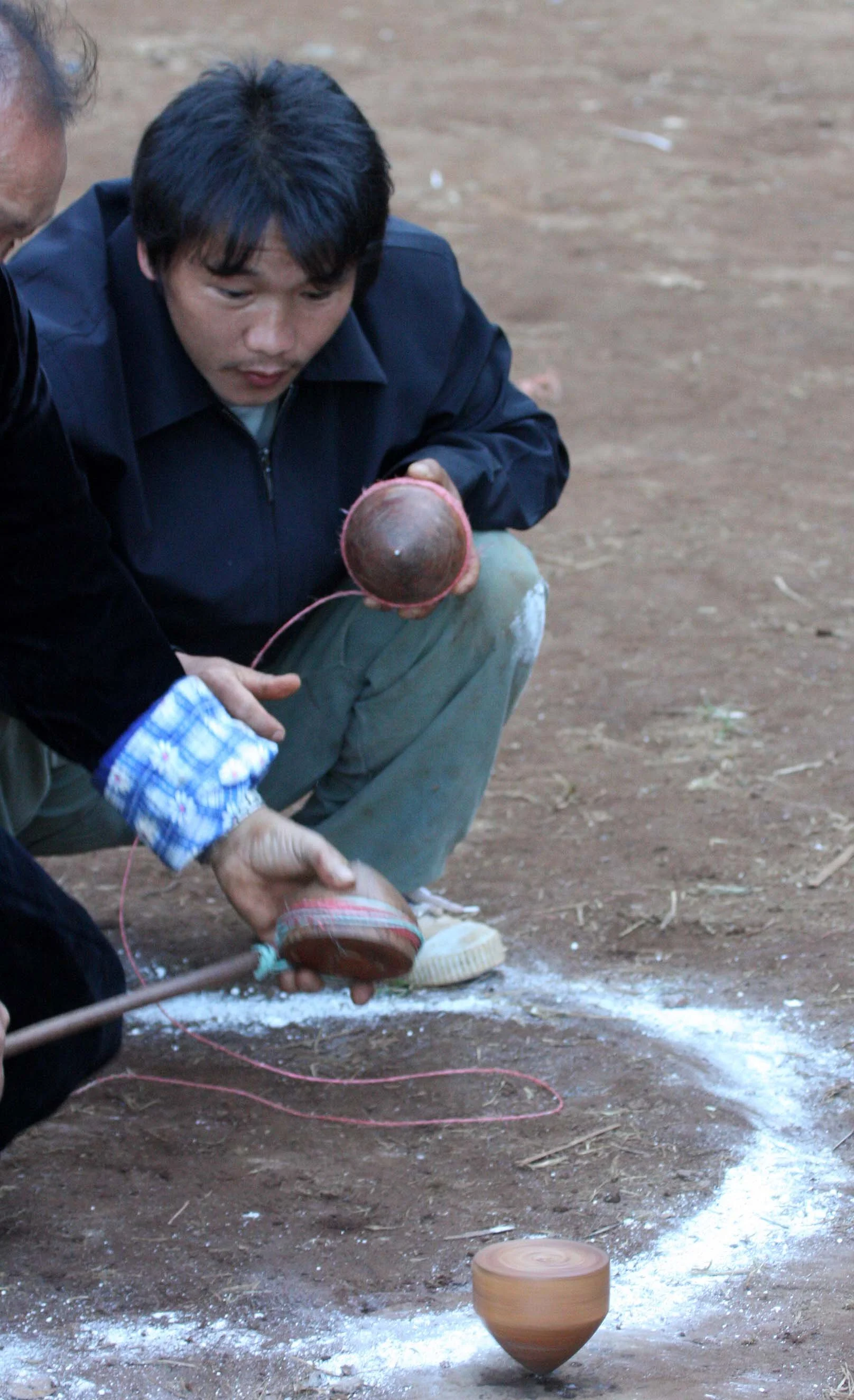

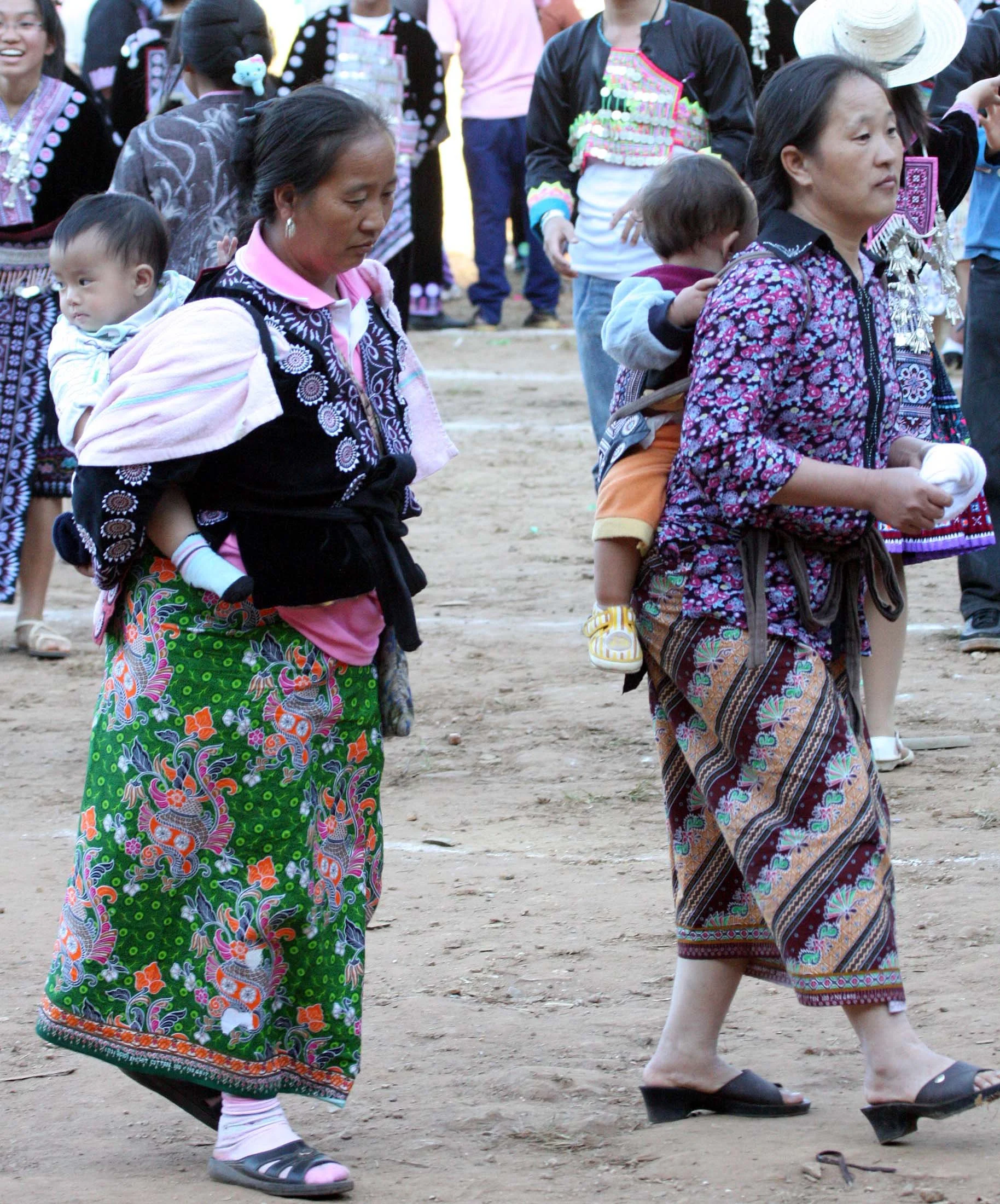


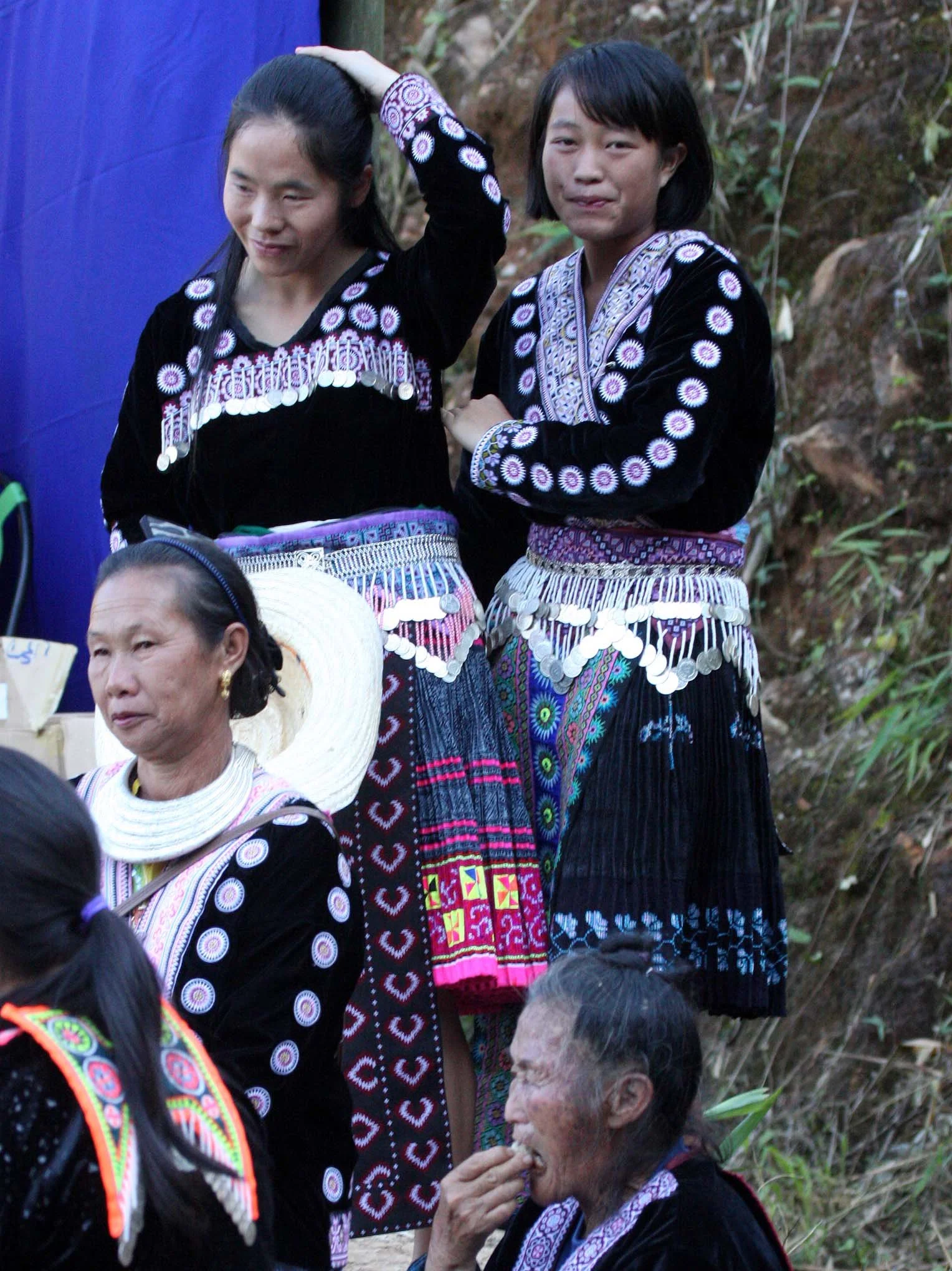

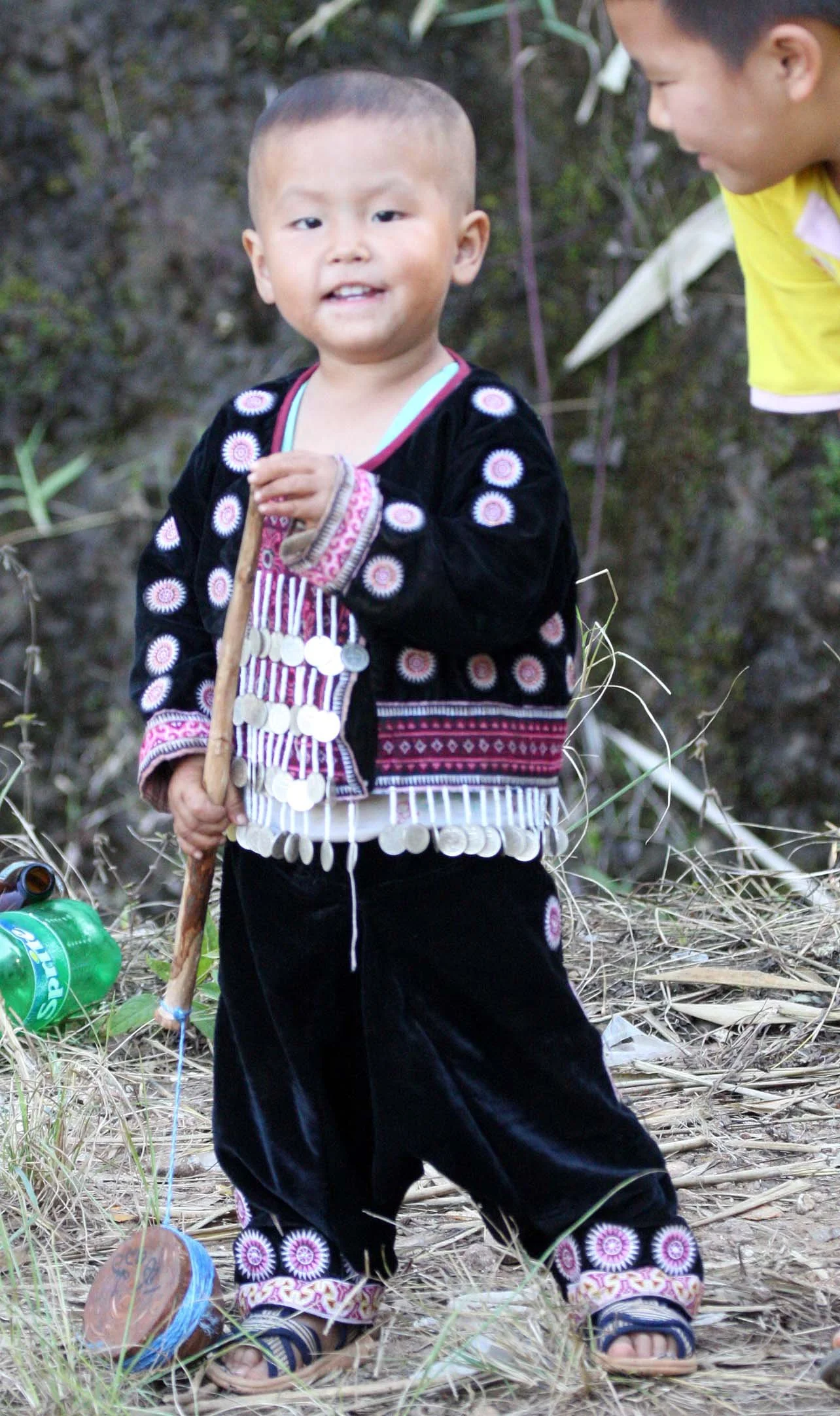

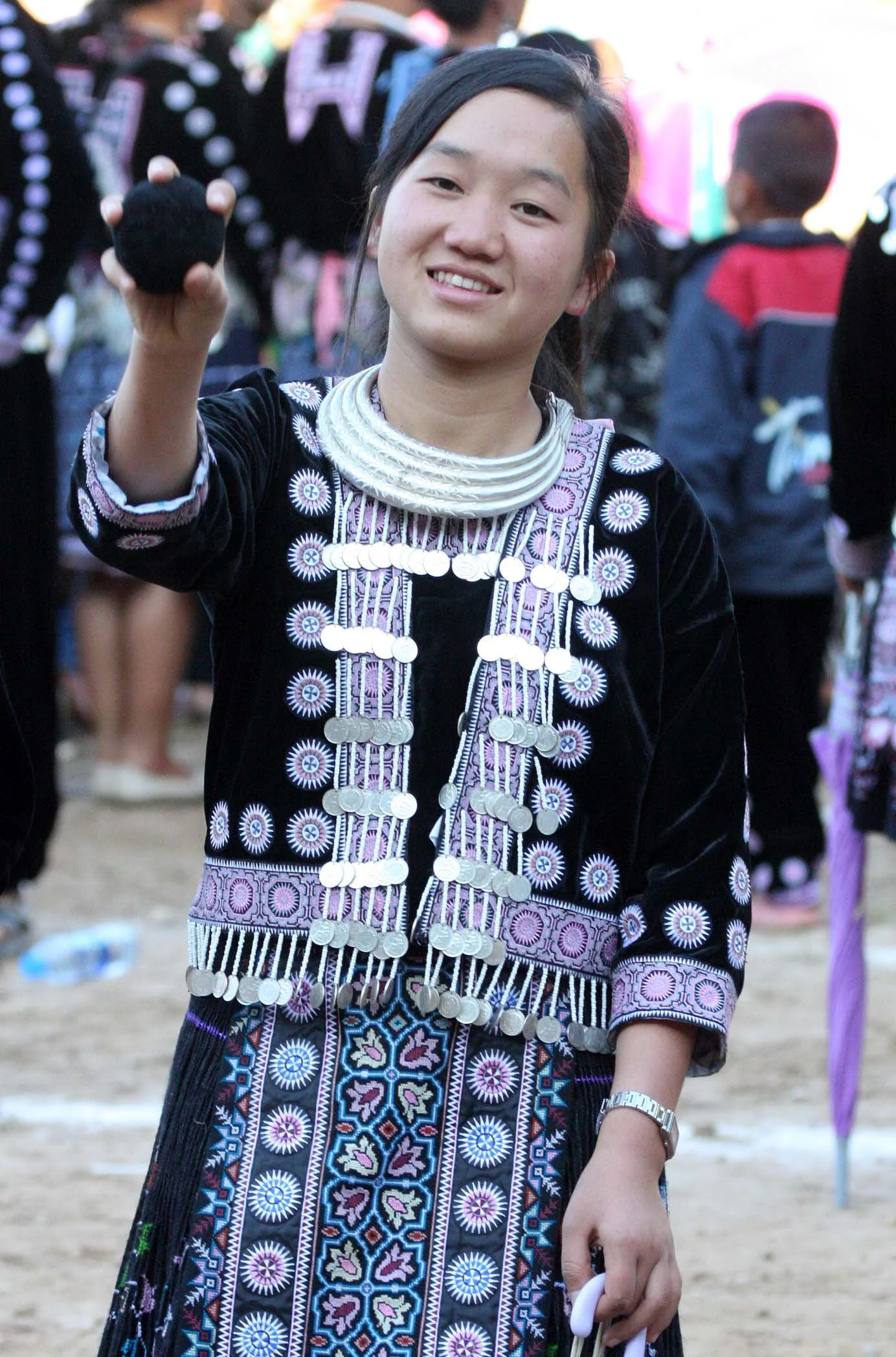

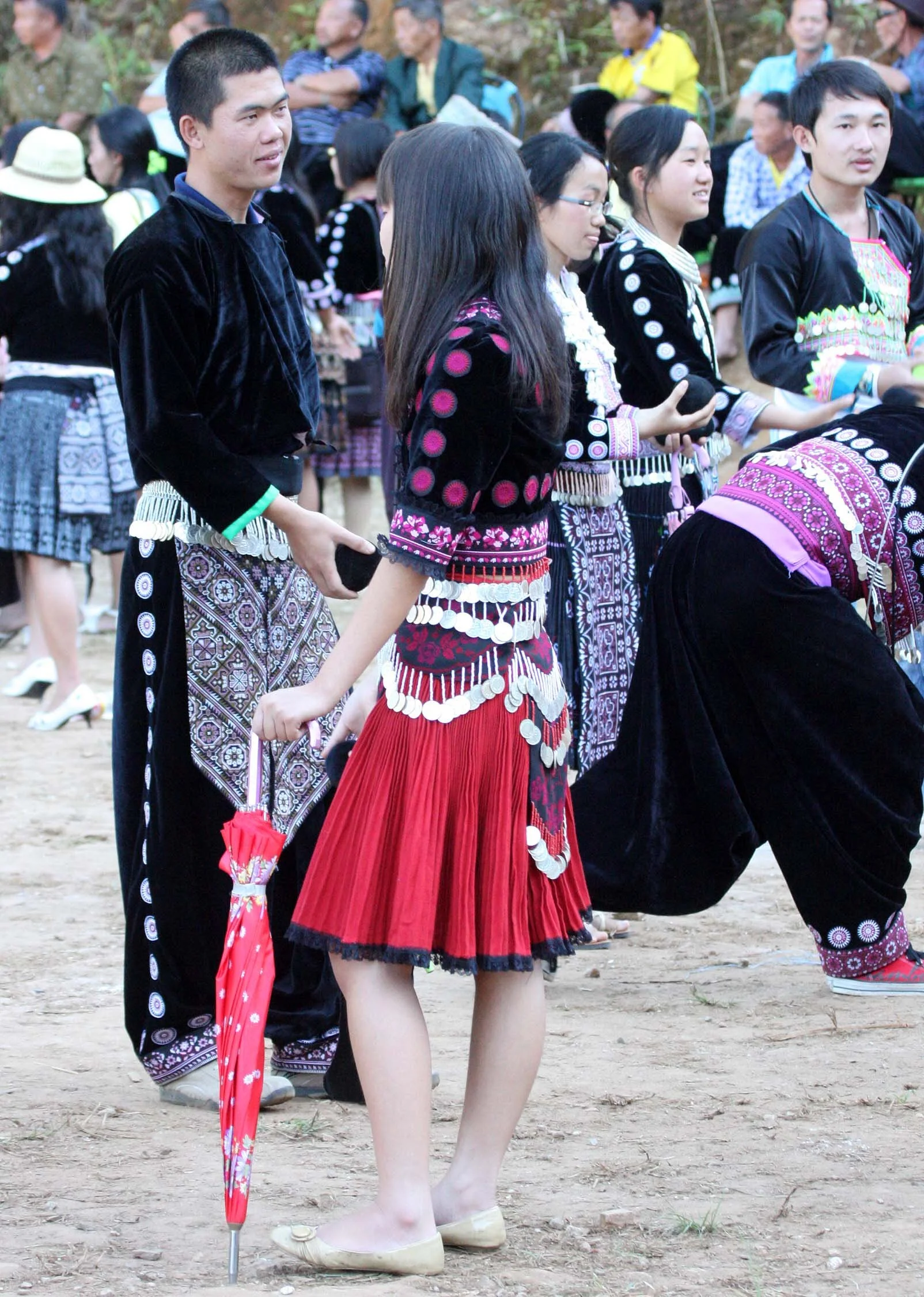






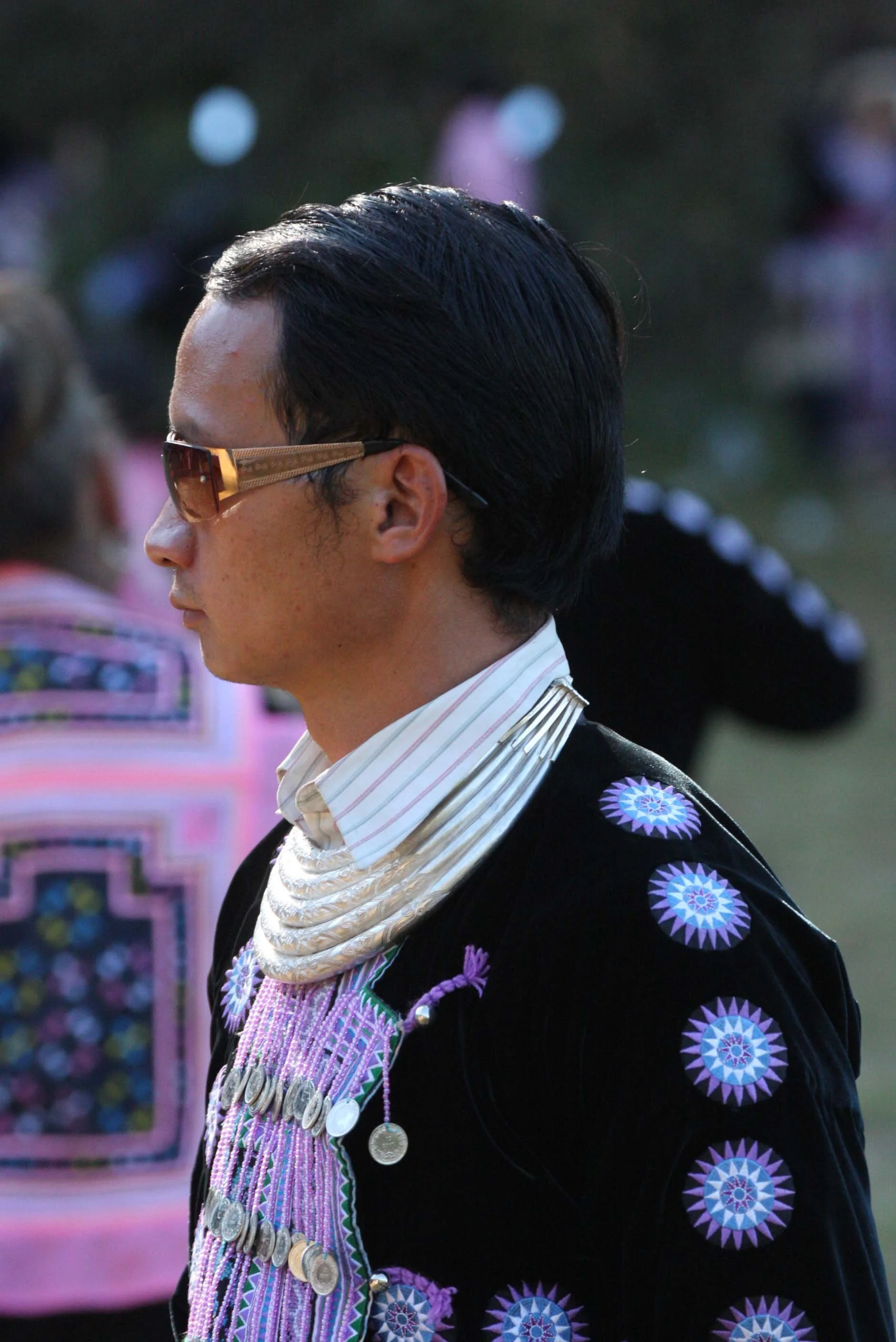














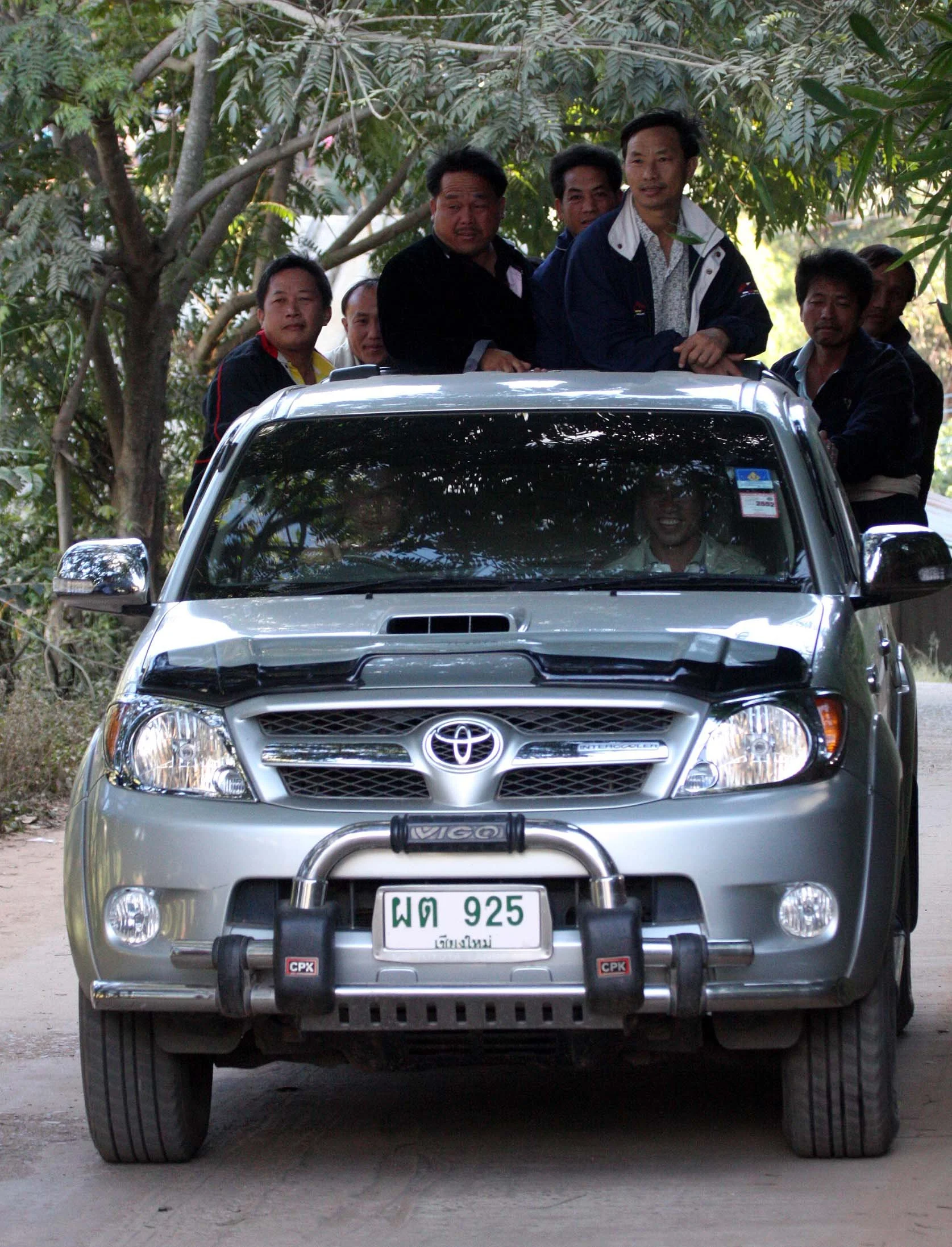






































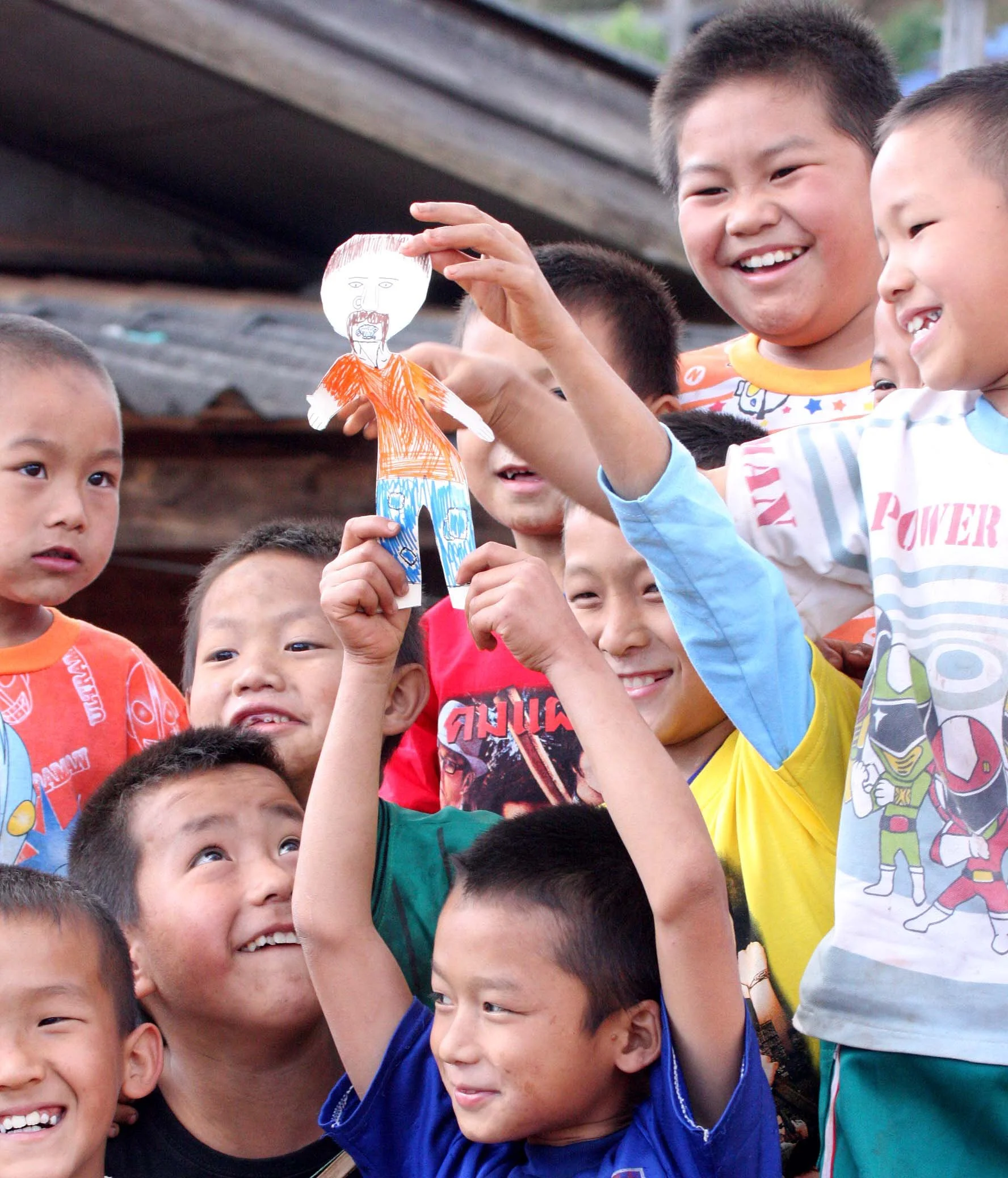
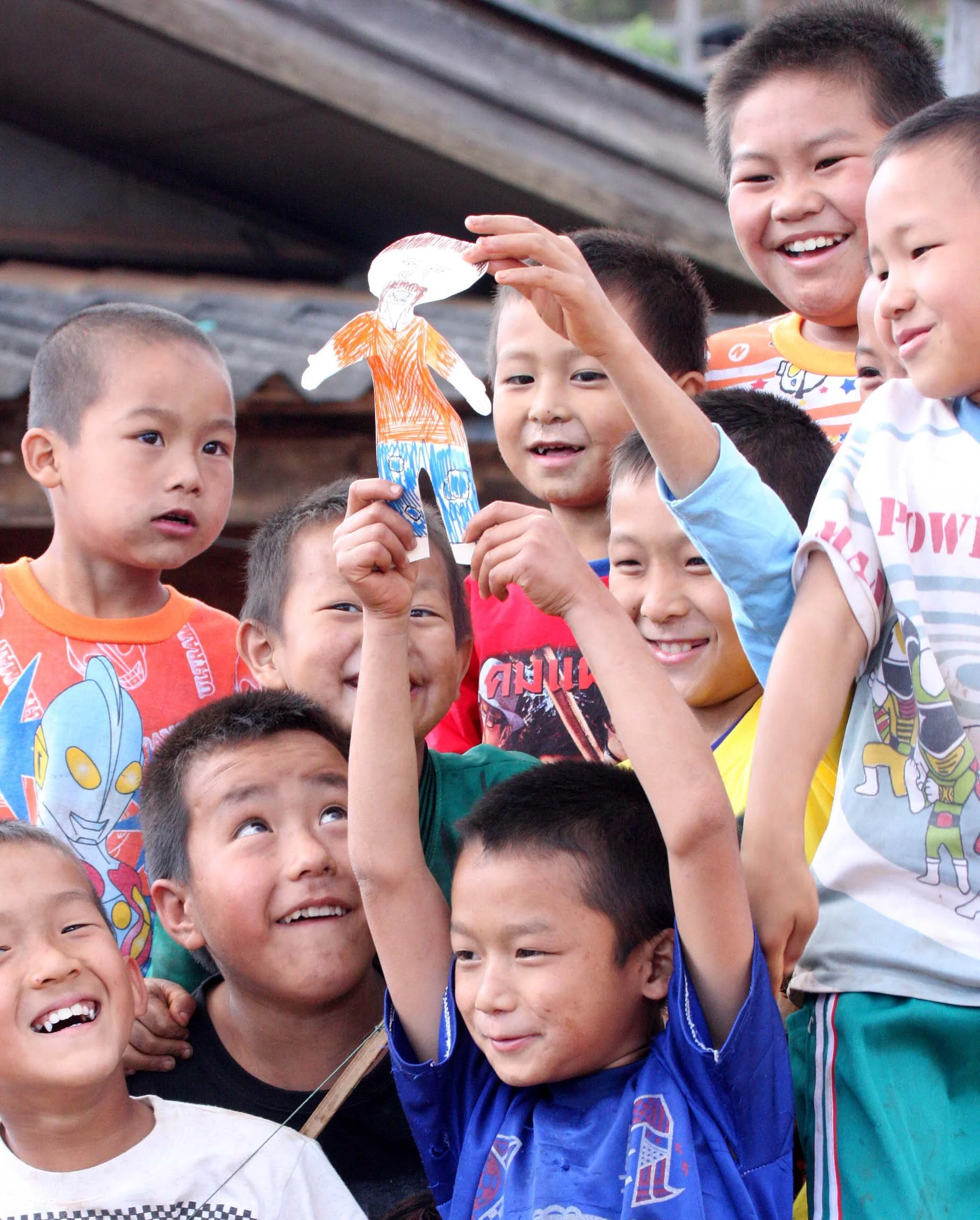



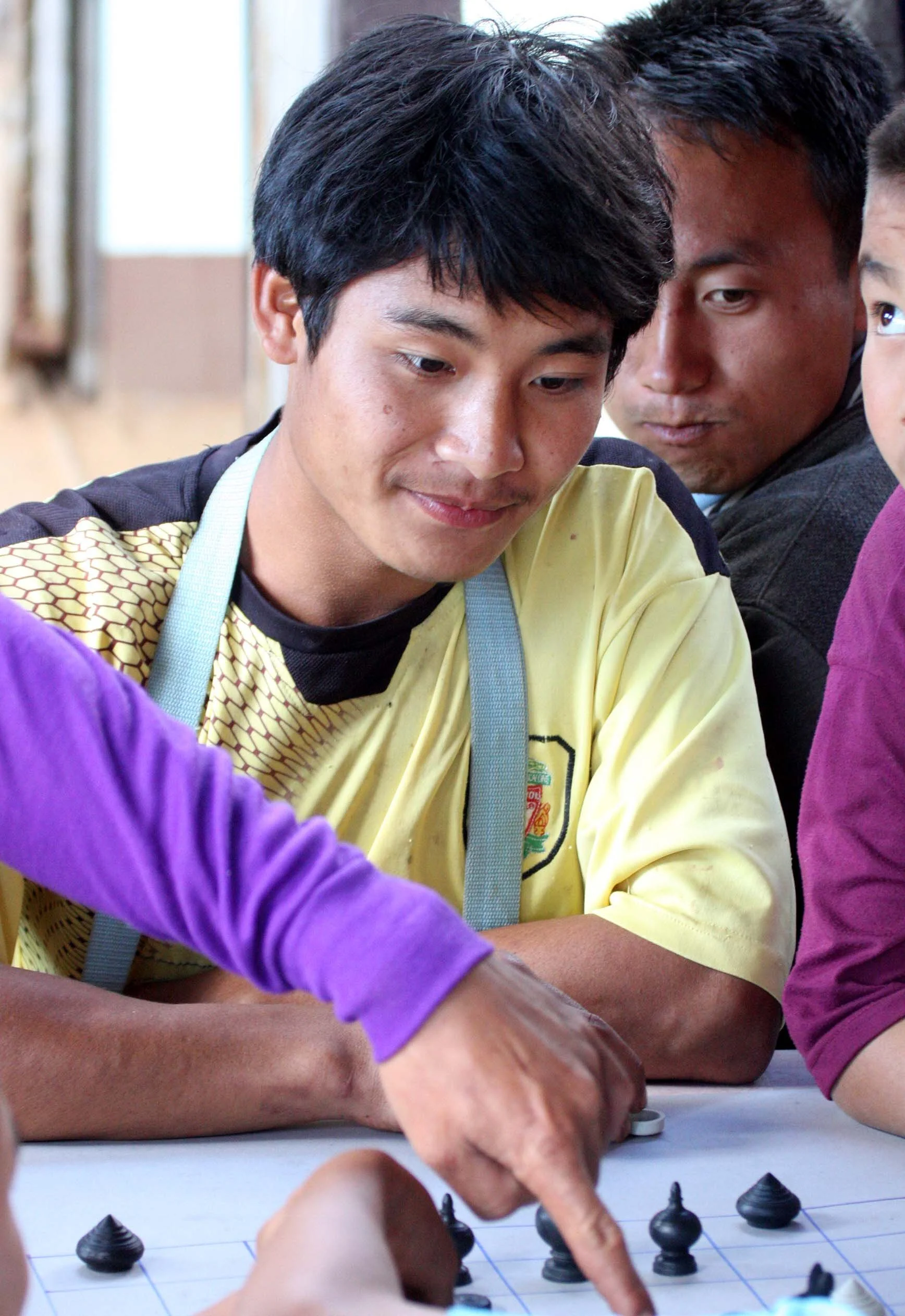






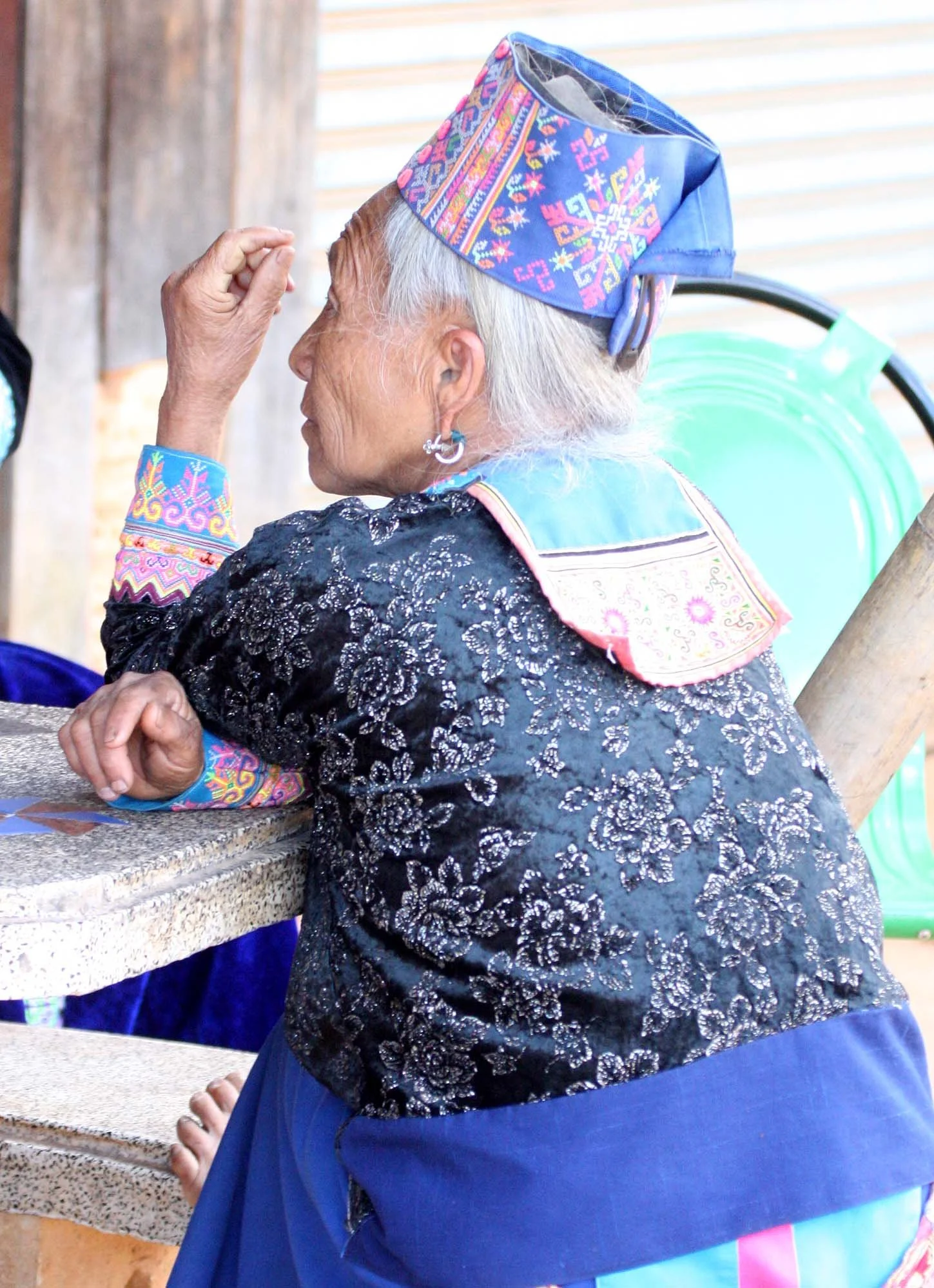





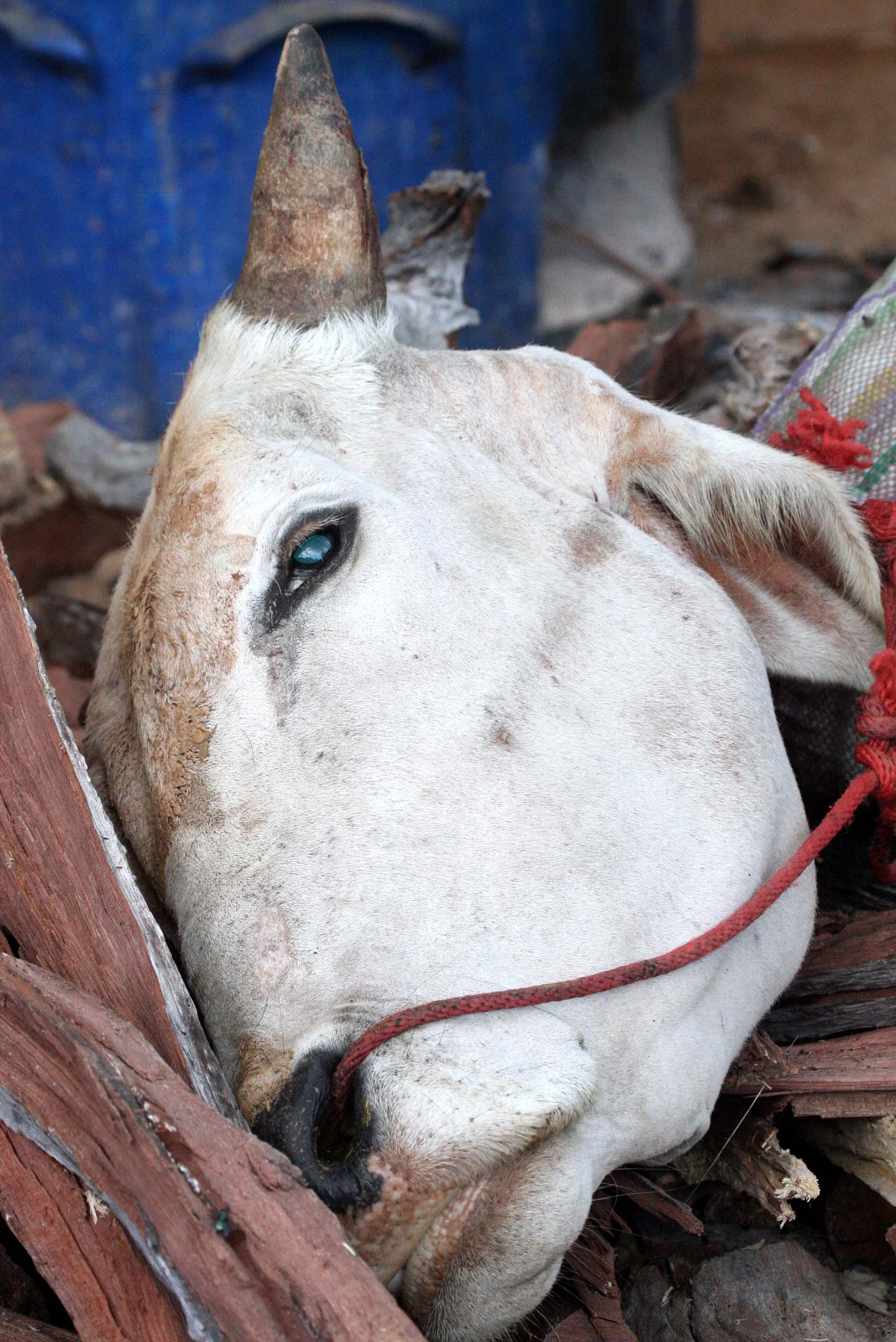
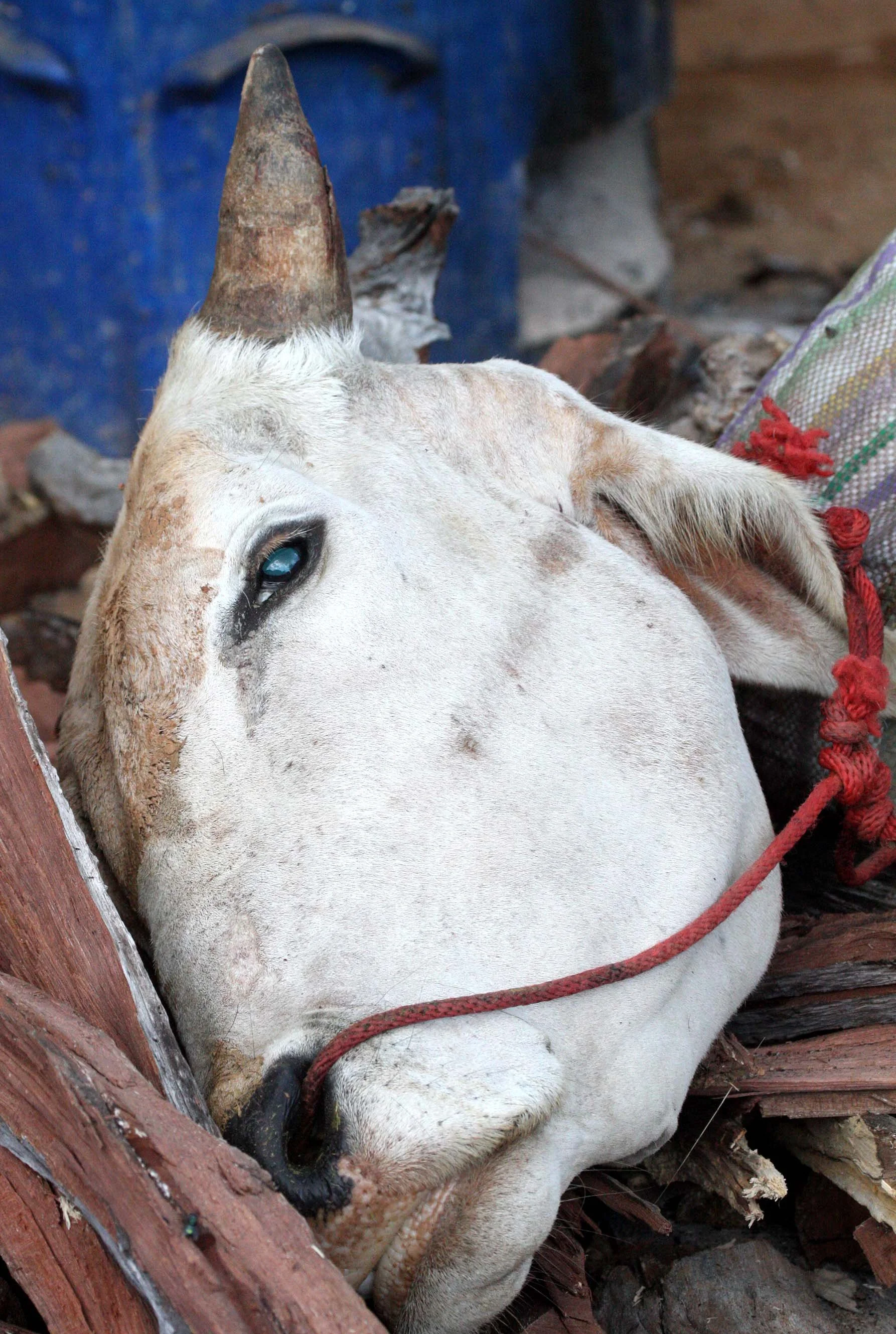






























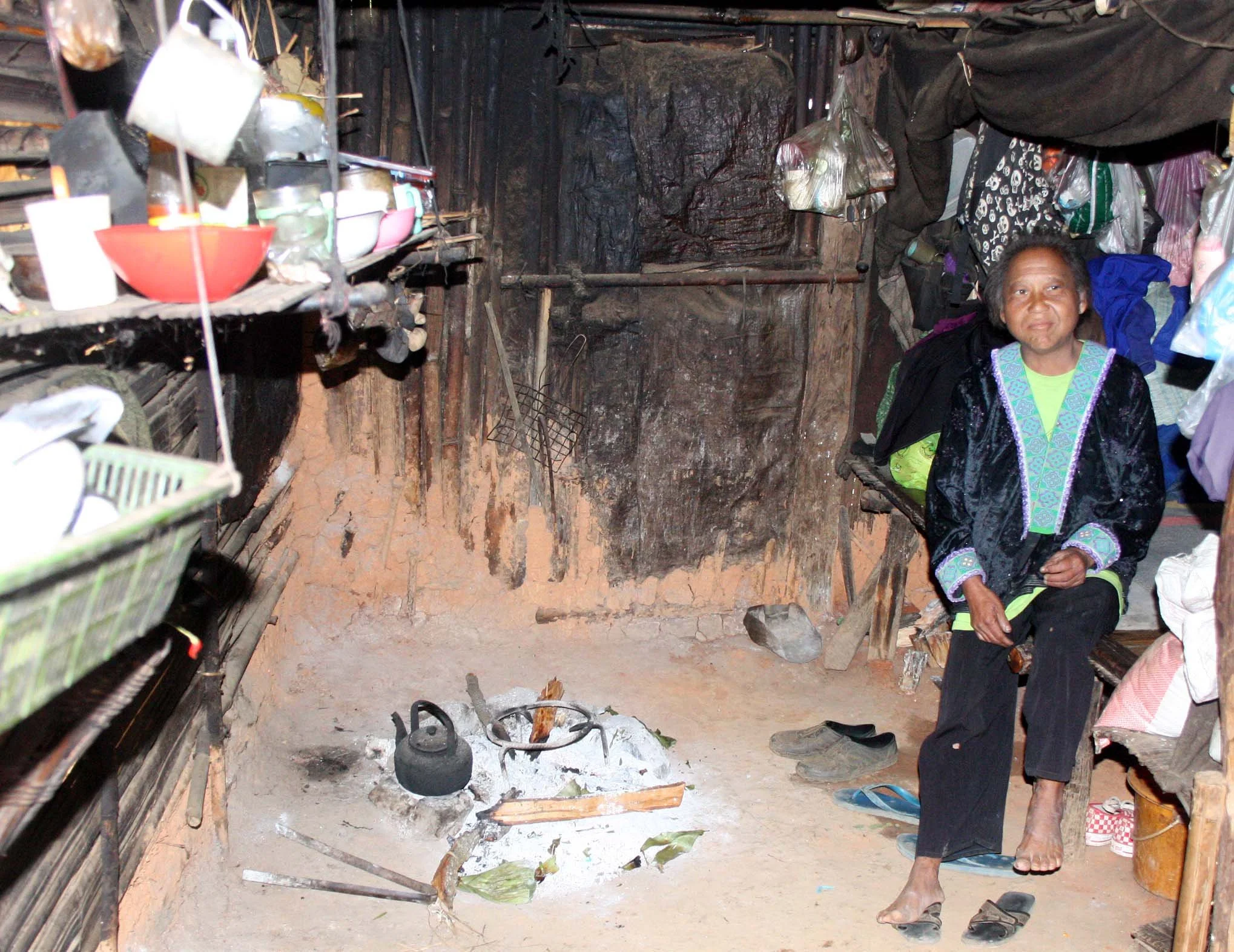











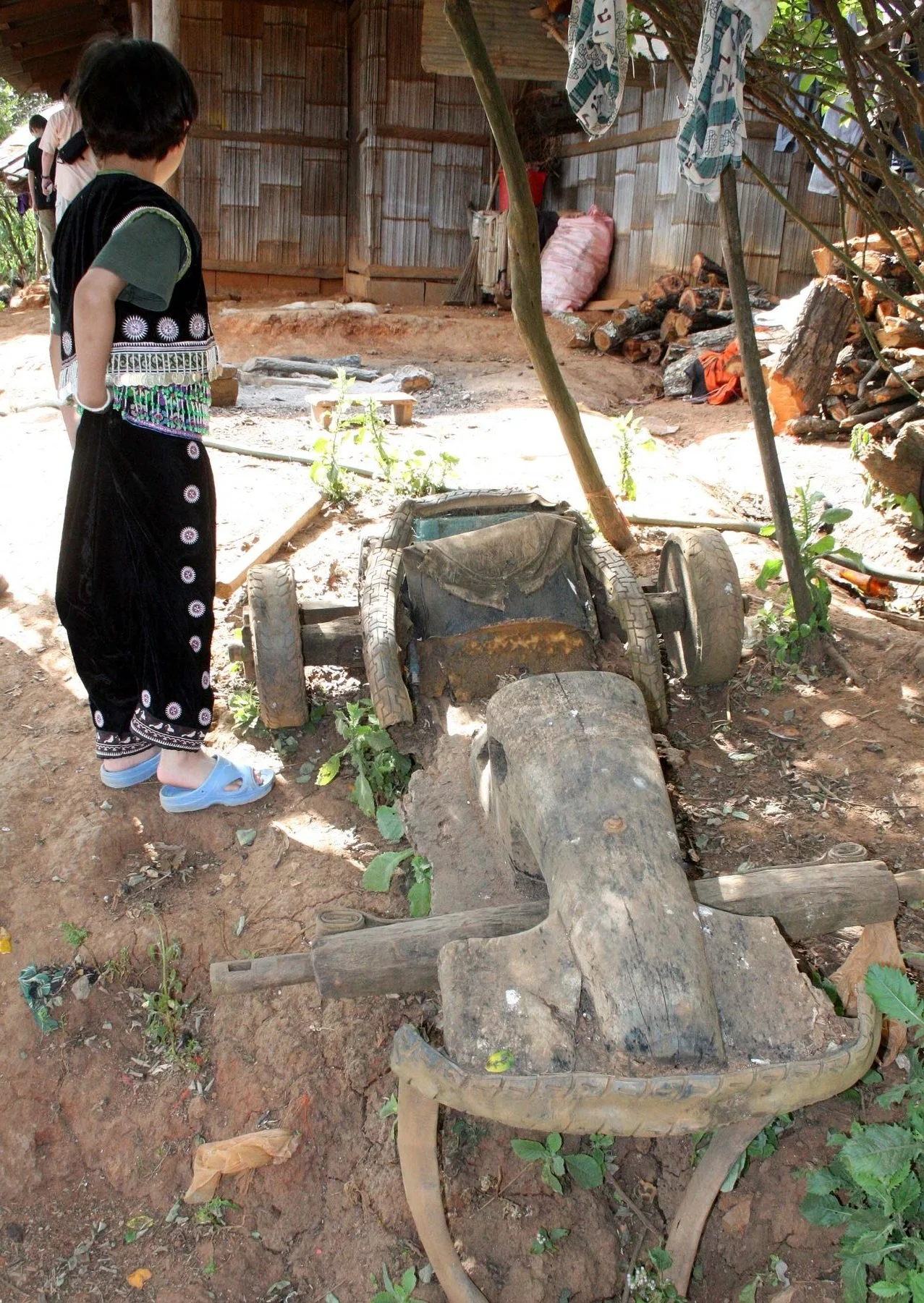






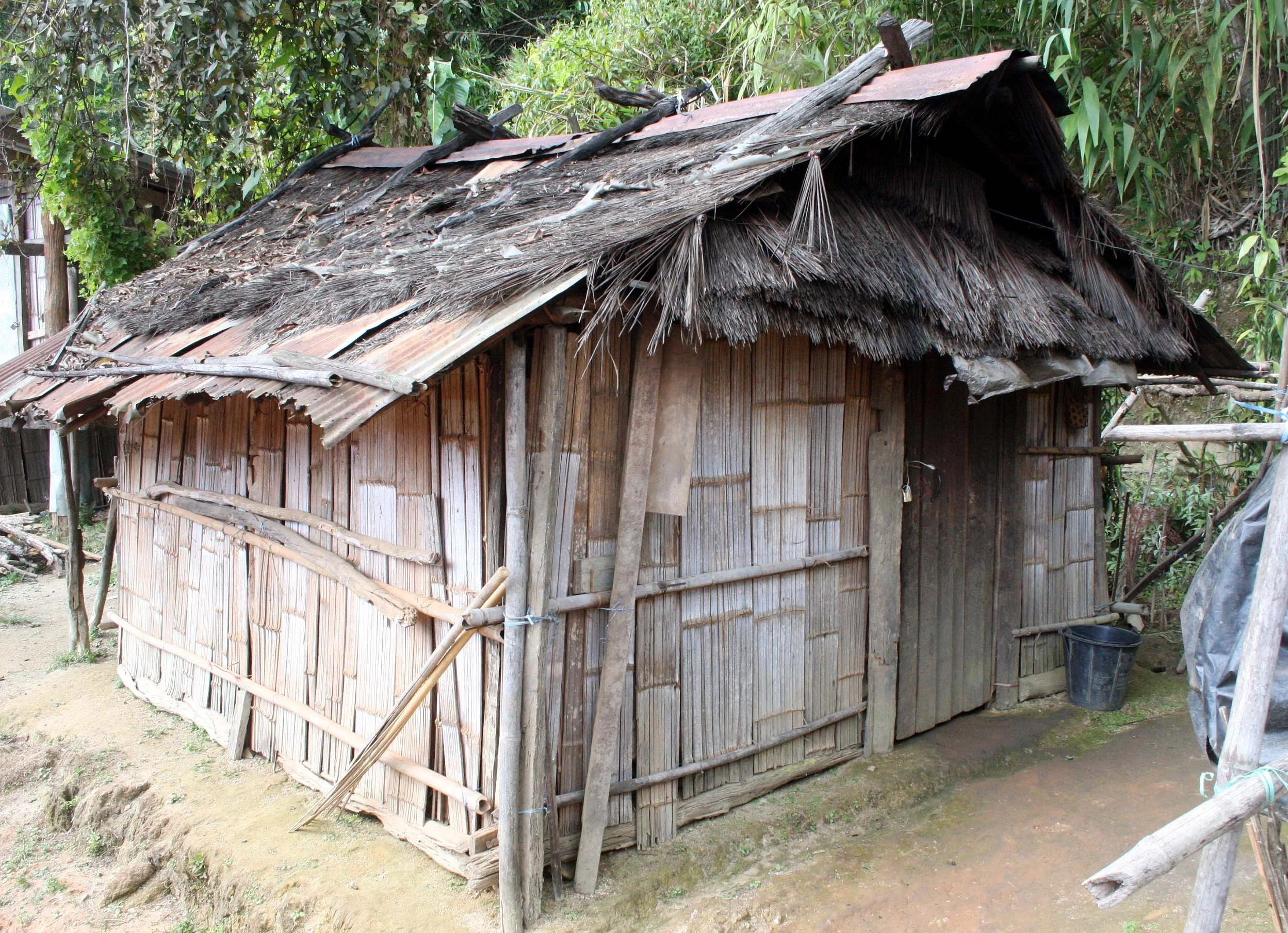














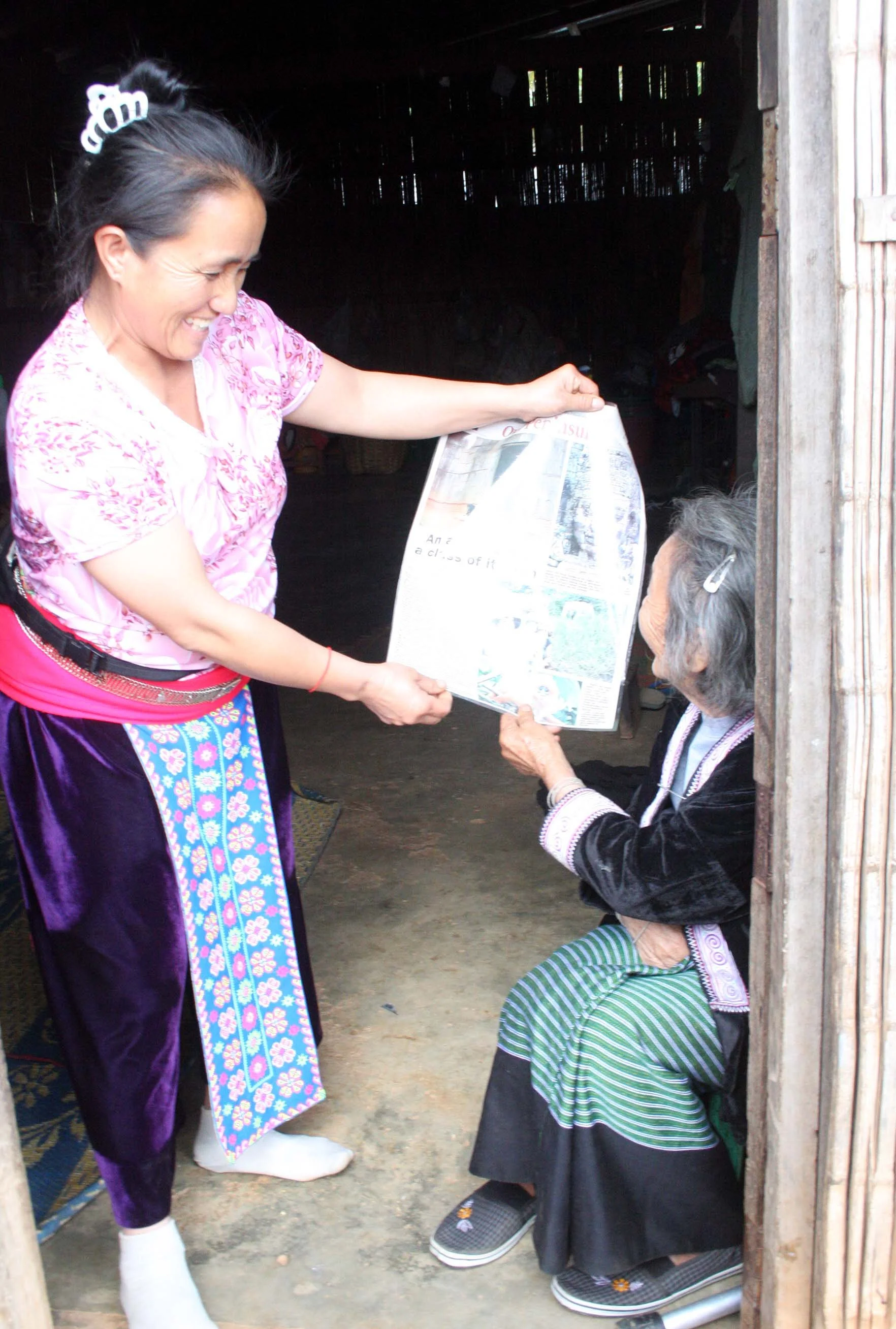

Famous! The article I wrote with her picture on the cover page!






